Always Free!

E N S E D


E N S E D












My wish for all of you is that you have lots of help from friends and family on the big day, that you accept that help, and that you enjoy the whole experience. If you want, you might even squeeze in some time for a nap!
Thanksgiving is such a wonderful opportunity to reflect on the year that is almost over. As in past years, most of us have experienced many ups and downs in 2022. I feel November is a good month to remember and appreciate the ups.
Many of us at Thanksgiving dinner take time before the meal to share what each of us is thankful for. This year, I’ve decided that I’m going to make a November Thankful Calendar. Starting November 1, I’m going to write in my calendar one thing that I am grateful for in my life. Each day, I’m going to read the previous entries. No duplications allowed! By No vember 30th, I will have a written testament to all of the blessings in my life. One day is not nearly enough to verbalize all that I have in my life. I am quite certain 30 days won’t be enough, either…but it’s a start!
For decades, I have been striving to become a more positive person. The majority of the time, I succeed. On occasion, however, I fall off the wagon. When I do, my husband, Manny, is my “go to” to get me headed back in the right direction. Manny is always first on my list when I start recognizing the blessings in my life. When I met Manny over 10 years ago, I was a different person than I am today. I am so much better now! I am happier than I have ever been. I am calmer, more considerate, a better communicator…and I have learned to really love myself. Manny has taught me a new way of being. For that, I am incredibly appreciative.
Over the years, I have found many techniques to help me stay on the positive pathway. Manny suggested that I share some of those techniques with all of you. As he said, “You have to have a plan in order to stay positive.” I took his lead, and you can read about some of my techniques in my Income Outcome column this month. (It’s on page 50.) Let me know what you think! If you don’t mind sharing some of your own techniques to stay positive, please email me at publisher@wew3.com.
Once again, best Thanksgiving wishes from our family and Women’s Edition. Have a fabulous month and great holiday. Let me know if you joined me in my November Thankful Calendar. See you next month! P.S. Happy birthday to my sister-inlaw Teresa!
Congratulations to Claxton Fireplace Center. They are officially in their new location at 3125 Oakview Dr. Suite 3. Stop by and see their new beautiful showroom. Their ad is located on the inside back cover.
Lusterstone is offering a great holiday special on having your porch and patio surfaced at the same time. See their ad on page 17.
Check out the magic that Incontro Closets & Cabinetry can do to transform any room in your home or even the garage. See their ad on the inside front cover.
The holidays are here! Time for family gatherings and story telling of days gone by. Wouldn’t it be wonderful to capture those moments for posterity?
Stark Media Films does just that! Call Jon today and see how he can help you save precious moments and stories you can never get back. See his ad on page 23.
It’s almost the end of the first semester. Are your students achieving as you think they can? Huntington Learning Center can give your students the boost they need to excel in their educational journey. Check out their ad on page 32.
The time to book your holiday catering now! Patricia Catering & Cocktails is offering a special this month. See their ad on page 7.
Heartland Center for Reproductive Medicine is welcoming Dr. Abigail Delaney to their practice. See their ads on page 27 and page 30.
Janet Van deWalle, National Publisher

More information at www.shopelan.com
“Focusing on one thing that you are grateful for increases the energy of gratitude and rises the joy inside yourself.” —Oprah Winfrey





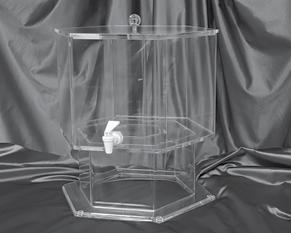
Remember, advancing age doesn’t mean you have to get less out of life! This is as true for your furry friend as it is for you.

It’s good to have a plan, but don’t waste time thinking about situations that “might” happen.
Our eyes and our smile are the first things that people notice about us, and we want them to look their best!


With the holiday season around the corner, it’s a great time to explore different crafts.
Women’s Edition is published by and is the property of Women’s Edition
Women
s
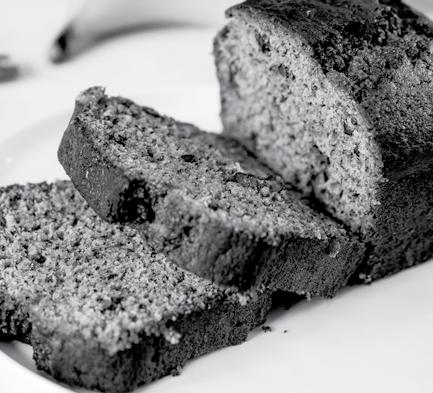
The Magazine For Metropolitan Women is a registered trademark of Women’s Edition, Inc. (Reg. No. 2,501,858). All rights reserved. Women’s Edition has no affiliation with any other publication.
Women’s Edition makes every effort to provide accurate information in advertising and editorial content, however, does not make any claim as to the accuracy of information provided by advertisers or editorial contributors and accepts no responsibility or liability for inaccurate information. Women’s Edition is not responsible for the accuracy of the QR codes appearing in our magazine.

© Copyright 2021, Women’s Edition, Inc. All rights reserved. This material is for personal use only. Republication and redissemination in whole or in part is expressly prohibited without the prior written consent of Women

s Edition
Inc.
reduce most
with
long bunion scar that may occur from traditional



are among the few doctors that perform this innovative procedure without




Many patients are back at work in only a few
or
and most insurance plans cover the procedure.
Elizabeth M. Klawitter, DPM,
Emlyn Forsung,
in Minimal Incision
402-315-4344
N. 108th St.

Mix 1 stick of soft butter with 1 and 1/4 cups of sugar. Add 2 eggs, 1 cup of mashed banana, and 4 Tablespoons of sour cream. Mix in 1 and 1/2 cup of flour, 1 teaspoon of baking soda, and 1 teaspoon of vanilla. Gently blend. Pour into a greased loaf pan and bake at 350 degrees for 45–55 minutes. Test for doneness with a toothpick. Let cool.
Beat an 8-ounce package of softened cream cheese with 1 and 1/2 cups of sour cream, 1/2 cup of chili sauce, and 1 package of dry onion soup mix. Gently mix in a can of shrimp (drained). Pour into a serving bowl and chill. Serve with crack ers, veggies, pita chips, or toasted baguettes.

Rinse a small turkey or turkey breast and pat dry. Place in roaster on top of sliced onion, carrots, and celery. Melt 4 Table spoons of butter and massage into the bird. Sprinkle with salt and pepper. Stuff the cavity (remove the giblet bag first) with sliced lemons, onions, and celery leaves. Bend the wings be hind the bird, if you like. Pour 1 cup of stock into the pan and bake at 350 degrees until an instant-read thermometer says 180 degrees. Let rest for 20 minutes. Slice before serving with gravy.
Drain 1 can of corn. Mix with 1 can of cream style corn, 6 ounces of sour cream, 2 beaten eggs, 1/2 cup of melted butter, and 1 package of cornbread mix (like Jiffy). Mix well and pour into a greased 8x10-inch pan. Bake at 350 degrees for 45–60 minutes.
Peel, core, and slice 8 apples (any type). Place in a skillet with 3 Tablespoons of butter and sauté for 3–5 minutes. Add 1/2 cup of brown sugar, 1/2 teaspoon of cinnamon, a dash of nutmeg, 1/3 cup of water, and 1/2 teaspoon of vanilla. Cook for another few minutes. Blend 1/3 cup of water with 1 teaspoon of cornstarch. Add to the apples and cook until thickened. You can add cinnamon candies, if desired, or a splash of whip ping cream. Serve warm or cold—also good right out of the pan.
Mix 1 can of cream of mushroom soup with 3 eggs, 1 and 1/2 cups of chicken broth, 2 cups of crushed butter crackers (like Ritz), 2 stalks of diced celery, 2 Tablespoons of pimiento, 4 cups of cut-up cooked turkey, and 1 cup of cooked rice. You can add diced onions and mushrooms to your liking, if desired. Pour the mixture into an 11x15-inch greased baking dish. In another bowl, mix 1 can cream of chicken soup with 1/2 cup of milk and pour over the turkey mixture. Sprinkle with up to 1 cup of grated cheddar cheese. Bake for 45–55 minutes.


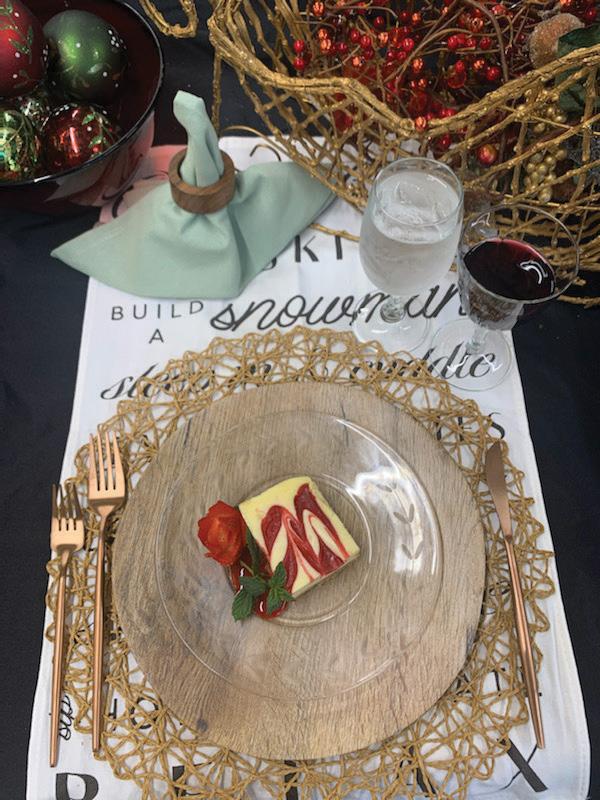

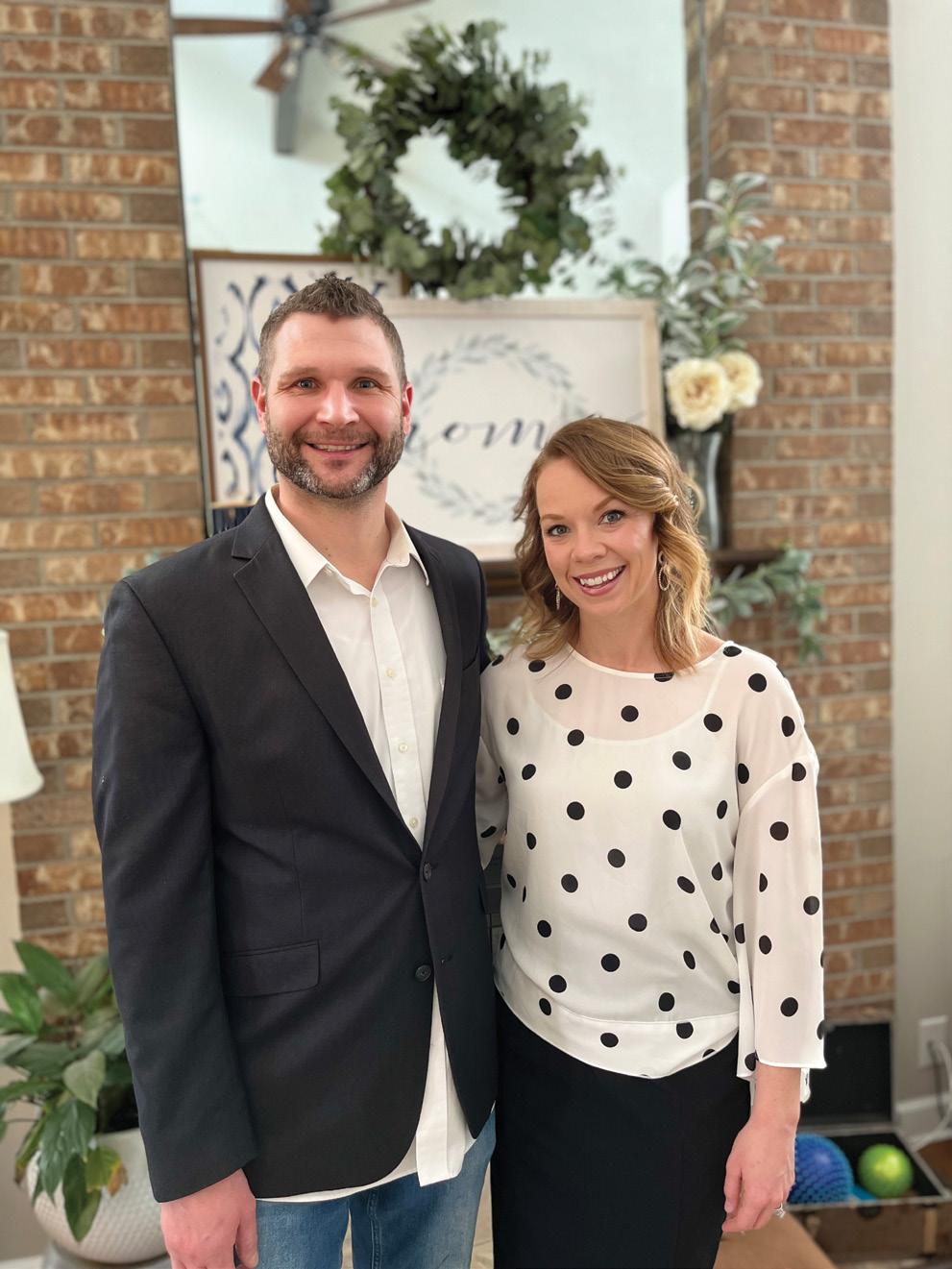
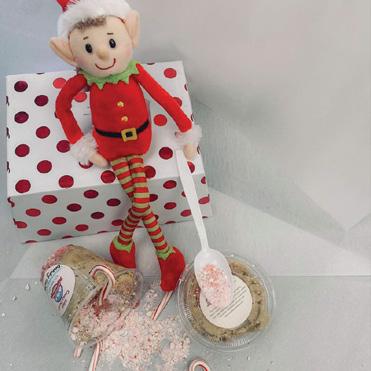






Spread mayonnaise, soft cream cheese, or Miracle Whip on 4 slices of fresh bread. Pile with sliced cooked turkey, 2 Tablespoons of cranberry sauce, and a slice of Swiss cheese (or whatever cheese you prefer). Broil, bake, or toast in a toaster oven until crispy.

Sauté 1/4 cup of chopped onion and one diced clove of garlic in 3 Tablespoons of butter until golden. Add 2 cups of chopped cauliflower and 2 Tablespoons of water and cook for another 2 minutes. Pour into a greased baking dish. Beat 2 eggs together with 1 Tablespoon of water and add to dish. Top with 4 slices of crispy crumbled bacon and 1 cup of shredded Parme san. Bake at 350 degrees for 1 hour or until bubbly.

Mix 1 cup of water with 1 cup of white or brown sugar. Boil for 5 minutes, until the sugar dissolves. Add 1 package of fresh cranberries, rinsed. Cook on medium for 10–15 minutes until the berries begin to burst. Remove from heat and let cool. Add a bit of orange zest and 1 teaspoon of fresh orange juice, if desired. Refrigerate.
Assemble 8–10 cups of a variety of fall vegetables: sweet potatoes, brussels sprouts, squash, zucchini, carrots, parsnips, shallots, garlic. Prepare each vegetable by peeling, seeding, and chopping. Put in a large bowl and drizzle in 3 Tablespoons of olive oil. Stir to coat and sprinkle with salt and pepper. Throw in 2 cups of pitted dates. Arrange on a large cookie sheet or cas serole dish and sprinkle some fresh thyme or rosemary on top. Cover and bake at 425 degrees for 40–50 minutes, until tender, stirring several times.
Sauté 1 cup of diced onion and 1 cup of chopped celery in 2 sticks of butter until fragrant. Mix in 1 teaspoon of dried sage, 1 teaspoon of salt, 1 teaspoon of poultry seasoning, 1 teaspoon of dried thyme, and 1/2 teaspoon of dried marjoram. Put 10–12 cups of dry bread cubes into the slow cooker. Pour the butter mixture over the bread. Add a diced apple, diced walnuts, or diced cooked giblets, if desired. Beat 2 eggs with 1 cup of chick en broth and pour into the slow cooker. Add 2–3 more cups of broth. Mix well. Cover and cook on high for 45 minutes. Adjust to low setting and cook for 4 hours.
Mix together one 15-ounce can of pumpkin puree, one 12-ounce can of evaporated milk, 1 and 1/2 cups of sugar, 4 eggs, 1 teaspoon of salt, and 2 teaspoons of pumpkin pie spice. Pour into a greased 9x13-inch baking pan. Sprinkle 1 box of yellow cake mix over the pumpkin mixture, and then sprinkle 1 cup of chopped pecans over the cake mix. Drizzle with 1 stick of melted butter. Bake at 350 degrees for 60–75 minutes, testing with a toothpick for doneness. Serve with real whipped cream.
Mix together 2 cups of sugar, 1 and 3/4 cups of flour, 1 and 1/2 teaspoons of baking powder, 3/4 cups of unsweetened bak ing cocoa, 1 and 1/2 teaspoons of baking soda, and 1 teaspoon of salt. Add 2 eggs, 1 cup of milk, 1/2 cup of vegetable oil, and 2 Tablespoons of vanilla. Beat for 2 minutes. Slowly add 1 cup of boiling water. The batter will be thin. Pour into 2 greased and floured cake pans. Bake at 350 degrees for 22–25 minutes. Cool.
Make frosting by melting 1 stick of butter and adding 2/3 cup of baking cocoa. Alternately add 3 cups of powdered sugar with 1/3 cup of milk and 2 teaspoons of vanilla. Stir until the desired consistency is reached. Garnish with fanned strawber ries, whole raspberries, chopped nuts, and whipped cream.

Before Old Man Winter makes heavy coats a necessity, sweaters offer a cozy middle ground. There is nothing like the classic chunky fisherman sweater to pop on when the temperature dips. The fish erman knit is on trend both this fall and winter. These oversized silhouettes are having a sweeping revival in chunky cable knits and cardigans. Juxtapose this style with a feminine, flowing skirt and have a fresh new look.
Oversized doesn’t have to mean frumpy. Pair a grandpa-style sweater with a pair of slim-fit jeans and boots for a modern take. All cardigans are on point this season and will be part of your MVP lineup. Sport your cardigan buttoned up the front as a top for a tailored, slimming, and put-together look. Patterns are always fun, with classic chee tah and leopard prints making a strong showing, along with stripes and color-block designs. Who says sweaters must be black, cream, or gray? Try some fun colors for fall, like royal blue, evergreen, or marigold.



Sweater dusters are making a resurgence this year, adding a bit of elegance to any outfit. Throw one over a t-shirt and jeans to pull the ensemble together. You can also consider the pullover vest (or a button-up-the-front version). Vests offer a great option for layering over blouses and long-sleeved tees. Try a sweater vest over a white shirt and jean skirt, finished with boots. Vests also look great with a tailored jacket for super warmth.
As we move into cooler weath er, it’s not just styles that adjust for the weather—our fabric choices change, too. From cozy cashmere to sumptuous suede and leather (authentic or faux), warmer fabrics will keep you feeling comfortable during the cool fall temperatures.
Wool has long been a favorite fabric for warmth, as it traps heat and insulates you from the wind. Merino wool and cashmere are favorite fabrics to look for this year. They are super soft and elegant. Their wearability goes on and on! A classic long wool coat is always a great purchase that never goes out of style.
Leather is another popular fall and winter fabric. Its popularity never diminishes, as it is dura ble, flexible, and warm. Consider a leather blazer, skirt, or jacket. Each will serve you well this fall and winter. Suede is making a big comeback this year, and along with that comes fringe! Suede has a retro feel and is perfect for fall because of its light weight. Just be sure to watch the weather forecast and don’t get caught in the rain!
Suede does not handle water very well.

Tweed woolen fabrics have always been great for fall, adding a bit of sophistication reminiscent of Jackie Kennedy to your jacket, dress, or skirt. Velvet goes in and out of style, but this year it is very much on trend. It feels luxurious, plush, and soft. What’s not to love? From athleisurewear to party dresses to pajamas, look for soft, washable velvet with a bit of stretch for the perfect fall and winter fabric.
If you love softness the way I do, you’ll love the retro corduroy jackets, pants, and shackets this year. What is a shacket? It’s an oversized lumber jack-style shirt that is usually worn open, is often plaid, and is of heavier weight than a shirt. It’s a jacket and shirt in one—it’s a shacket. What to wear with a shacket? Usually, jeans and a t-shirt is the hippest way to wear this trendy jacket.
Denim is probably the most uni versal cool weather fabric. Everyone rushes out to get the newest fall cuts in denim. Very popular this year is the ultra-high waisted jean with a small flare at the ankle. This slimming, comfortable, ’70s flared jean looks fresh again. Jeans this season are trending looser and more relaxed. Of course, there is room in your closet for every cut and color of denim if you love jeans.
A must-have for most people is the classic jean jacket. You need one or two or several to throw over pretty much anything in case the temperature turns cooler on you. Denim jumpsuits, shirts, dark (almost navy) washes, denim blazers, and dresses are in stock for fun this year. Head-to-toe denim is a cool look that we could all try. Just get out all the denim in your closet and see what works together. You may come up with a new look you love!
As is evident, there is a surfeit of new trends for every woman this season. It’s up to you to reveal your style personality by showing it in your fashion choices. Rejoice—it’s sweater weather!



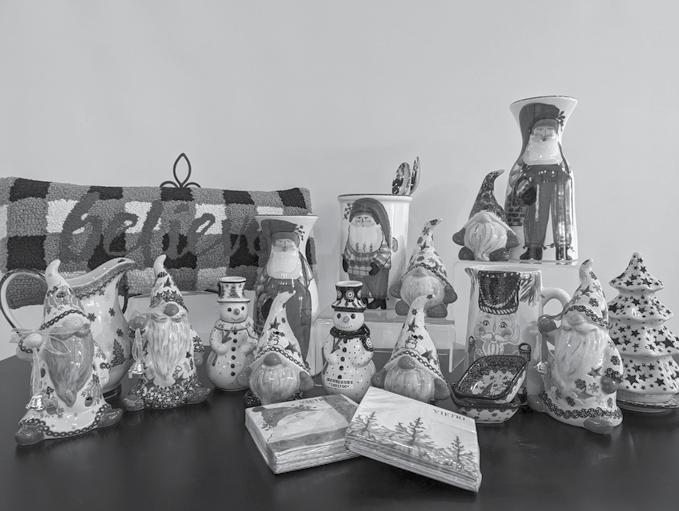
Plaza—2947 S 108th Street




Key Home Care provides compassionate home health care for seniors and others who need it. Owner Sandra Miller and her staff of 45 work around the clock to provide personal care, respite care, bedside care, companionship, and hospice care, and the client doesn’t have to leave home to take advantage of these services.
“We are a non-medical home care agency,” says Sandra. “Our purpose is to furnish services throughout the commu nity to seniors and those who need a little help—or a lot—to stay home. We serve people from four hours a day to 24 hours a day, and we can help them with whatever tasks they might need. Our goal is to keep people living in their home.”
Many of us don’t think about the reality of home health care until a family member or friend needs help with daily personal tasks such as showers, bathroom visits, dressing, and medication reminders. If the need is there, Sandra and her team will step in with optimism and grace.
Sandra has been in social work and senior care for 30 years. When she started Key Home Care about seven years ago, she was the only person in the business. It grew so dramatically in the Omaha, Council Bluffs, and surrounding areas that she now serves the community with a staff of 60.
By Janette Calabrobefore a person passes. “One of my ladies in hospice was very alert before passing,” says Sandra. “I went to her during a night shift, and she was looking up in the corner of the room. As I walked in, she said, ‘Do you see that? How beautiful!’ I asked her what she saw, and she said, ‘that angel.’ She was so calm and awestruck.”
The life changes that necessitate home health care are often hard to talk about, but Sandra and her team tackle these difficult conversations head on, with compassion and dignity.

Life and death are just as mysterious now as they have been since the beginning of time, Sandra asserts. Though they can be stressful, life’s transitions aren’t necessarily bad, and they’re frequently misunderstood. Sandra helps those going through hospice make that transition with as much ease as possible, for the patient and the family.
“We have been able to serve several hospice clients over the years,” Sandra says. “We are not a hospice company, but we can be that person at bedside. Honestly, it is such an honor. I have had many families say that, if it weren’t for our company, their mom or dad would not have been able to pass away at home as they wished to do. That makes me feel really good. We do day-to-day services, but being able to take care of hospice clients is special because it’s such an intimate thing. Rarely does anyone want to go to the hospital to pass. It’s just nice to be in your own surroundings.”
Part of the intimacy of the hospice experience is spiritual. Sandra says that well over half of her clients appear to have experienced a supernatural entity of sorts who visits shortly
This particular client identified what she saw as an angel, but Sandra points out that no one really knows or sees the same from the earthly side of things. “In my heart,” Sandra says, “I believe something is coming to make an easier transition.” Sandra adds poetically that perhaps the veil during passage is so thin that those passing on can see and connect with what others can’t. That’s comforting, although different for everyone. “This is something that we all will go through, and we know so little about it.”
The life changes that necessitate home health care are often hard to talk about, but Sandra and her team tackle these difficult conversations head on, with compassion and dignity. “We take care of people who are passing, but we also take care of people who simply aren’t able to do the things they used to be able to do,” and that can be so hard to accept. “I like to remind my staff that our clients were 30 years old at one time. They have not always been 80 years old! We’re not here to take independence away; we’re here to support our clients. As a society, we owe that to our seniors. Everyone has a history, and everyone has a story. We try to honor that. We help with tasks at home, but that’s not the only reason we’re there. It’s deeper than that.”
Key Home Care is located at 5664 North 103rd Street, in Omaha. If you or a loved one needs some assistance to be able to remain at home, please call Sandra and the Key Home Care team at 402-982-9254 or email Sandra at sandramiller@ keyhomecare.us. Visit keyhomecare.us to learn more.
Sandra Miller, Owner
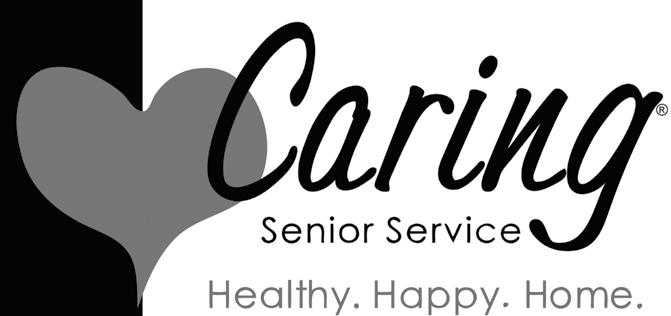







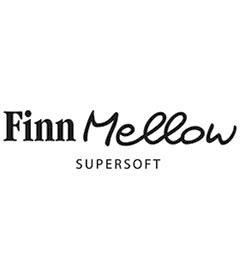







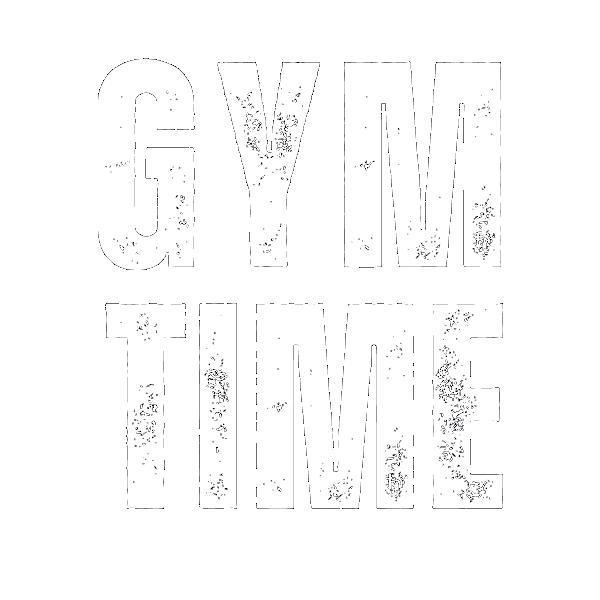



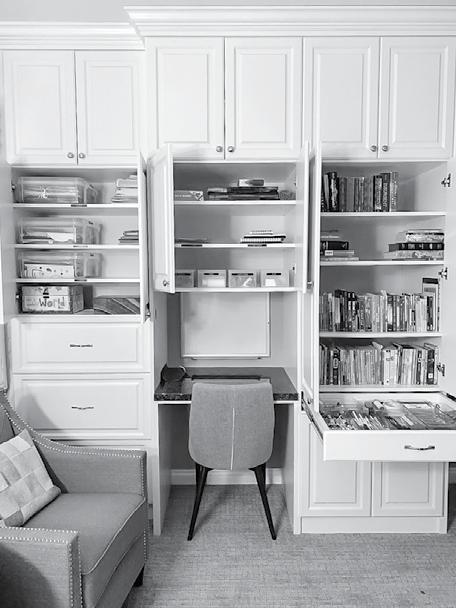


Happy birthday, Scorpio! This holiday season, you are in full swing, and you put a spell on people with how mysterious and charismatic you are! Oth ers find you captivating—remember that when it comes to relationships, direct communication is key. You may be tempted to give in to obsessions; instead, try to find a healthy way to act on your desires. If you want lasting love, make it happen!
Sagittarius (Nov 22–Dec 21) Planet Venus is in your sign, and you unescapably feel more attractive! This influences love, beauty, and finances. It’s an ideal time to meet someone new!
Capricorn (Dec 22–Jan 19) You must prioritize your plans during this busy season. You are a natural leader, which is a helpful attri bute to have. Remember, the most important image is happiness!
Aquarius (Jan 20–Feb 18) This holiday season, make use of all your talents and skills. Your family life will be content, and every one will relish spending time with you!
Pisces (Feb 19–Mar 20) November is for celebrating with your family, friends, and loved ones. You may feel dissatisfied with your career. Sometimes, changes are necessary for satisfaction.
Aries (Mar 21–Apr 19) Rams may be manifesting some magical moves! Remember, you must ask for what you want in order to get it. Refrain from being aggressive—your usual confident self will suffice.
Taurus (Apr 20–May 20) Your sign will be blessed with the full moon and lunar eclipse. The positive changes in your social life
are abundant and fruitful. You made that happen!
Gemini (May 21–June 20) Ceres has entered your sign, making everything you do associated with delicious nourishment and family life. It’s a perfect spell for holiday planning!
Cancer (Jun 21–Jul 22) The moon rules your sign, which makes you complex, instinctual, and full of emotional depth. You also can throw a fabulous holiday party! Be sure to double down on selfcare during this busy season.
Leo (Jul 23–Aug 22) The spotlight seems to always be on you. Things feel chaotic this season, but you will continually end up on top in both love and assets!
Virgo (Aug 23–Sep 22) Throughout the celebrations with family this season, you will be receiving many surprises and blessings! Don’t overlook self-care. Make sure it stays on the list this month.
Libra (Sep 23–Oct 22) Planet Venus is dominating your sign for a majority of this season. This is initiating romantic feelings, and a rela tionship is bound to mature. You deserve to have what you want!
Life is hectic, full of issues, decisions, events, and more. I am one of those “worry warts” who ruminates on each and every item. COVID-19 exacerbated this problem, as I added the health of the entire nation to my list of worries. When coping with worry starts to become a worrisome issue of its own, it’s time to take action.
According to national research, one out of 10 people find worrying to be a distressing affliction. This is true for me! Worry affects my mood and my sleep. I often wake up in the middle of the night because worry has taken over my brain.
I thought I would share some insights from experts on ways to cope with these issues. I’ve also added a few of my own strategies—some work better for me than others. These are just some options to consider.
Accept that you can’t control everything. Unexpected things happen. If the weather forecast shows rain during an outing you’ve planned, that is something you can’t control. The power might go out, leaving you unable to watch the show you were planning to watch. The grocery store might be out of the particular ingredient you planned to buy. If you accept that you can’t control everything, the unexpected is less likely to throw you off-kilter.
Try meditation or prayer. Take a moment, close your eyes, and focus on how your belly expands and contracts as
you breathe in and out. This will calm you and help manage racing thoughts. For guided meditation, reach out to your physician for a recommendation. Many psychotherapists can guide meditation and teach you how to guide yourself at home. If you are religious, you can also lean on prayer as a form of meditation.
Take a moment for problem-solving. When you are confronted with something that worries you, take a minute to see if you can figure out the issue. If the weather has canceled your plans, reschedule. If you can’t afford to buy something right now, make a goal to save for it. We tend to worry when we don’t know how to resolve something. Making a plan can soothe our minds.
Don’t focus on what might happen. It’s good to have a plan, but don’t waste time thinking about situations that “might” happen. It’s a misuse of brain time. Make your plan and then move on.
Keep busy. As Benjamin Franklin famously said, “Idle hands are the devil’s playthings.” Concentrate on other things
Spa • Wellness Playground • Tea Bar • Workshops
Mitigating your tax burden is always our core goal. This is best achieved through comprehensive tax planning. Our experienced tax professionals excel at tax planning for businesses and individuals.






For more information call: 402-551-1919 or email: info@bepcpa.com
1301 S 75th Street, Suite 200 402-551-1919 | bepcpa.com
Kelly Davis has envisioned a facility focused on creating an environment that centers around physical as well as mental and emotional aspects of personal health and wellbeing.
Top-quality facials, massages and body treatments performed with organic and plant-based products, full locker rooms
Wellness Playground — provides a comfortable space to sample 15-30 minute wellness modalities including guided meditations, sound healing, infra red and halo-therapy, compression thera py and energy medicine, among others.

Regency Court Shopping Center • 120 Regency Parkway Suite 104 402.885.8256 • www.valowellnessspa.com/contact
Hours of Operation: Mon.-Sat. 10AM-7PM, Sun. 12PM-5PM
 Bob Berger, CPA Partner
John Elliott, CPA Partner
Joe Pritchard, CPA Partner
Liz Tritsch, CPA Partner
Bob Berger, CPA Partner
John Elliott, CPA Partner
Joe Pritchard, CPA Partner
Liz Tritsch, CPA Partner
in your life. During the pandemic, I found myself organizing my closets and drawers, donating things I hadn’t worn lately. When my mind was busy, I didn’t have time to worry. Go on a walk. Focus on nature. Whatever type of exercise you enjoy, do it. Exercise benefits both body and mind.
Help someone else. When I donat ed all those clothes I wasn’t wearing, I felt good about doing something for someone else, and that’s no acci dent—helping others also improves the emotional health and well-being of the helper. Many organizations, from food banks to animal shelters to nature preserves, are always looking for volun teers. Take your mind off your own wor ries by taking care of someone else’s.
Talk about your worries. Conver sation can help with anxiety. Lessen your burden by sharing your worries with family or friends. Be clear with them about what you need from them (a listening ear, feedback, or both). A therapist is also a great resource for both listening and feedback. Therapists can also let you know if your anxiety would benefit from behavioral therapy or medication.
Be grateful. Take a moment daily to focus on the blessings you have. If I’m worried about money, I look around at my home and notice what I have. If family is on my mind, I text or call that person to keep in touch. You can even write down these positive things in a journal to remind yourself of your blessings later.
Write things down. One of the worst worry times for me is bed time. When I relax, my mind starts to wander. Keep a notebook on the night stand. If something is bothering you, write it down. Acknowledge the worry, and sometimes it will go away… or at least you can deal with it in the morning.
Remember that worrying is natural. Everyone worries. In fact, some worry can lead to practical and import ant actions. You only need to reduce your worry if it starts to run your life. Give yourself permission to take care of yourself and move forward.
Worry is a part of life. It’s what you do with your worry that matters! If you are a “worry wart” like me, try some of these techniques to manage your anxi ety. You will feel better for it.


(AEP)

Amanda Stinn & Jayne Klein
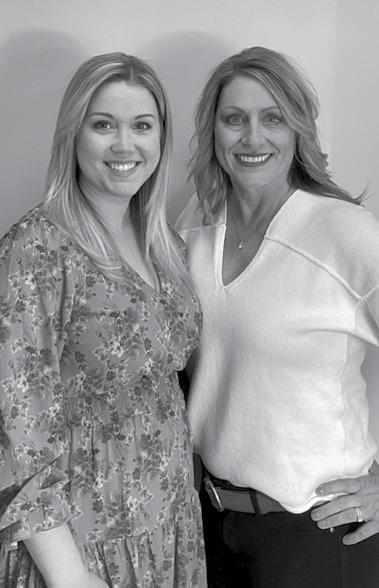
Licensed Insurance Agents Klein Senior Insurance, LLC





Cell: 402-214-2312 | Office: 712-216-7070 Email: jayne@kleinseniorinsurance.com | amanda@kleinseniorinsurance.com


As they say at Custom Gems, they’re “more than just gems!”This unique business offers so much more—from jewelry to fossils, from minerals to gems, from artwork and creative gifts to equipment and supplies for making jewelry yourself. Customers can work with the artisans to create personalized pieces or repurpose precious family heirlooms.
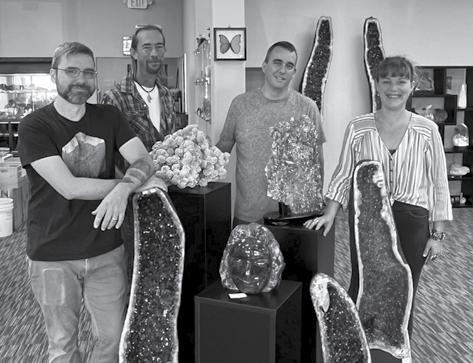
Owner Tim Kautsch got interested in his life’s work at an early age. “I was always interested in gemstones and took classes from the original owners, Ed and Erma Pharaoh, who opened the doors to the shop in 1975,” he recalls. “I started out working part-time here in high school. After I graduat ed, I split my time between this shop and another jewelry store. When the couple sold the store to Chuck Swanson, I eventually became the manager. He sold the business to me in April 2009.”
Tim earned his gemologist degree in 1995 from the Gemological Institute of America. He works side by side with his brother, Kevin Kautsch, and two other employees. “One of the most challenging parts of my job is finding the time to get everything done,” Tim says. “The clock spins really fast.” As owner, Tim is responsible for all operations, office admin istration, staffing, and marketing, as well as being an artisan himself. “It’s fun to create beautiful things. I especially like the stone cutting part of the business.”
Having the workroom on site offers clients the oppor tunity for a custom experience that is unique in the Oma ha area. The shop provides many repair and maintenance services, including ring sizing, earring post/clip conversions, chain repair, prong and mount repairs, bead and pearl string ing (with knots), and watch battery replacement. They even offer laser welding, which allows them to complete the most difficult of repairs. When it comes to custom jewelry de sign and fabrication, they offer stone cutting and polishing, inlays, gem and stone setting, wire wrapping, rock tumbling, and custom casting.
Tim continues to be fascinated by the materials in his craft and is eager to share their history. “This fossilized crab from Madagascar, was a living thing that died and was bur ied three million years ago,” he says, holding up the fossil. “Now, somebody can bring it back to life as a conversation piece in their home.” Tim regularly goes to gem shows to find new minerals, fossils, and more. Recently, he purchased tour maline crystals from Brazil that offer exquisite colors of pink, green, and watermelon. “New materials can be very special. I never do the same thing twice, and I like the challenge of discovery and the creative process.”
By Deborah DaleyA major feature of the shop is the creation of personal ized items. For example, some customers will find a one-ofa-kind rock on vacation and want it polished and put into a piece of jewelry. “We had one grandparent who loved a piece of petrified wood and wanted jewelry made for all his grand children. We made rings for the boys and earrings for the girls.” Others might have an outdated heirloom from a family member and want the stones within the piece configured into more modern jewelry. “I especially enjoy when someone imagines a piece of jewelry or a gift,” Tim relates. “We sketch out a design and make it a reality. I love to see the smiles on people’s faces.”
One of those satisfied customers is Mary Darling of Omaha. She has been coming to the store for more than 30 years and has had dozens of items worked on. “You can find one-of-a-kind, unique gemstones here,” Mary says. “I enjoy browsing and will often have special gifts made for family and friends. I have had numerous heirloom pieces recrafted, resized, or reimagined for myself. The staff are extremely talented craftspeople.”
Recently, Mary had two pieces worked on. “I found a beautiful zircon at the shop that I just knew would be perfect for a ring. They created a setting with channels so the stone looks like it floats.” She also recommended the artisans to her sister-in-law, who lives in Kansas City. “Her sterling silver rings were in bad shape and needed major repair. She sent them to me, and Tim and his brother found beautiful replacement gemstones and created tiny shelves on the rings to latch the stones. My sister-in-law was ecstatic. She thinks the rings are better than when they were brand new!”
Tim warns that the holidays are a busy time—if you want a personalized gift, you should visit the shop early. Most cus tom jobs take a minimum of six to eight weeks to complete. For more information, call 402-397-9606, visit customgem somaha.com, or stop by Monday through Saturday at 8487 Frederick Street.
L-R: Dustin Clayton; Kevin Kautsch; Tim Kautsch, Owner; Heather Steele






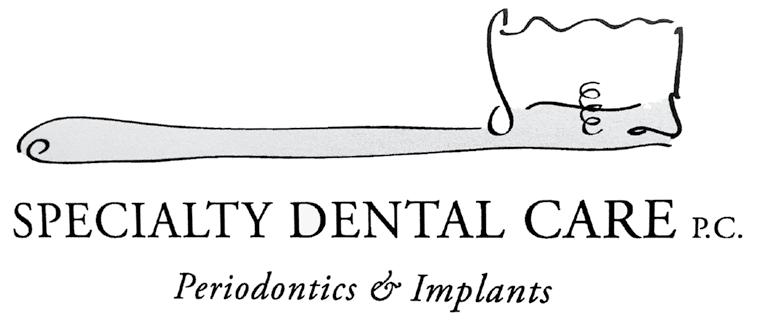

The latest statistics show that about nine percent of Americans will be diagnosed with an eating disorder in their lifetime. That’s almost 29 million people, and the number is growing. These statistics are problematic from every angle. Over 10,000 people in the United States die every year from an eating dis order—that’s about one death every 52 minutes. Eating disorders aren’t just a nuisance. They can be deadly!
Another disturbing statistic is that over 25 percent of those with an eating disorder attempt suicide, and many of these people are children and young adults. The average age to develop an eating disorder may be younger than you think. Ask a 10-year-old girl what she’s afraid of today, and 80 percent will say they are afraid of being fat. Almost 60 percent of adolescent girls go on crash diets, use diet pills or laxatives, or force themselves to vomit when no one is watching. Our country spends about 65 billion dollars every year to help fix this problem, and we must! To do our part to head off eating disorders, let’s take a look at causes, symp toms, and treatments.
According to Johns Hopkins experts, the most common age of onset for eating disorders is between 12 and 25 years. Although much more common in women, 10 percent of eating disorders are in men. Women and girls are most likely to be diagnosed in their teens or early 20s. Men and boys are less likely to seek treatment, so statistics may vastly underes timate the incidence of eating disorders in this population.
What exactly is an eating disorder? The American Psy chiatric Association states, “Eating disorders are behavioral conditions characterized by severe and persistent disturbance in eating behaviors and associated distressing thoughts and emotions. They can be very serious conditions, affecting physical, psychological, and social function. Common types of eating disorders include anorexia nervosa, bulimia nervo sa, and binge eating disorder.” From the outside, an eating disorder can look like preoccupation with weight, body shape, or food. It can look to others like addiction to food, aversion to food, or compulsive exercise.
If you, a family member, or a friend is struggling with dangerous eating habits, seek help from a health professional such as a mental health practitioner, physician, nutritionist, or dietician. Often, the “why” for this disorder coexists with underlying causes such as mood and anxiety disorders, OCD or obsessive-compulsive disorder, or drug abuse and alcohol. Resulting depression can exacerbate symptoms. Some eating disorder genes are inherited and some behaviors and coping mechanisms are learned, so it’s best to consult with a health professional to determine the cause. Everyone is different.
Let’s look at the three main eating disorders of anorexia, bulimia, and binge eating. Anorexia is often described as a sort of self-starvation. Those engaged in anorexic eating hab its have the highest mortality rate of any psychiatric diagno sis with the exception of opioid addiction. Usually, anorexia is accompanied by an intense fear of gaining weight. Some
people might be preoccupied with weighing food or eating small quantities of low-calorie foods consistently. Some an orexic behavior is simply restrictive, with the day composed of dieting, fasting, and excessive exercise. Another subtype is bingeing and purging. Both are dangerous, and serious health issues will result from starving a body and mind.
In young women, menstrual cycles may cease, and faint ness and dizzy spells impact daily life, as do brittle hair, nails, and bones. A lack of tolerance for cold is common. Heart burn, muscle weakness, constipation, and stress fractures from thinning bones and too much exercise can lead to even more serious health problems. Emotionally, anxiety and depression often lead to poor concentration and lethargy. As if that isn’t enough, heart and kidney problems can lead to lifelong health issues or even death, especially for those who vomit or use laxatives.
It’s important to seek treatment as soon as symptoms are noticed, before irreversible health problems have occurred. Medical evaluation, outpatient treatments, and inpatient programs can work wonders. Regular meals can combat fatigue and weakness; counseling can combat anxiety and depression. As with any type of addiction, relapse is possible (especially during the first year after recovery).
Bulimia is often described as alternating a diet of low-cal orie foods (like a plate of lettuce) with binging on high-calo rie foods (like ice-cream sundaes). The binge is usually a lot of food in a short amount of time, and this is where the feel ing of loss of control is prominent over what’s on the plate. This is also where shame or embarrassment compels people to keep their binges secret. Negative self-worth results, and vomiting from the secret binge feels necessary.
Many of the physical symptoms of bulimia are similar to those of anorexia, but some are different, due to excessive use of laxatives, diet pills, and water pills. Bulimia victims usually make repeated trips to the bathroom right after a meal, often have a sore throat or acid reflux, may exhibit swollen glands in the cheeks or problems with tooth decay, and often suffer dizziness and fainting from dehydration. If you suspect bulimia in someone you live with, keep an eye out for a baffling amount of empty food wrappers or missing dishes of food from the fridge.
The American Psychiatric Association notes that “indi viduals with bulimia nervosa can be slightly underweight, normal weight, overweight, or even obese. Family members or friends may not know that a person has bulimia because they do not appear underweight and because their behaviors
are hidden and may go unnoticed by those close to them. Bulimia can lead to rare but potentially fatal complications including esophageal tears, gastric rupture, and dangerous cardiac arrhythmias. Medical monitoring in cases of severe bulimia nervosa is important to identify and treat any possible complications.”
Health practitioners often recommend outpatient behav ioral therapy to modify how a patient eats. Antidepressants may be useful, as well, especially to aid in avoiding bingeing and subsequent vomiting. Behavioral therapy gets to the root of the problem—it addresses inner thoughts and mindsets that intrude and misinform.

Binge eating (that is, consuming massive amounts of food in a short period of time) is something we might all do occa sionally. When bingeing becomes frequent (at least once per week for a minimum of three months) and is accompanied by loss of control over the eating episodes and subsequent emotional pain, it has developed into a disorder. Lack of control could mean eating too fast or until uncomfortably full, sometimes when the person wasn’t hungry to begin with. Eating alone and feeling guilty and depressed afterwards is another problematic sign. Binge eaters don’t normally force vomiting or turn to laxatives or excess exercise, but chronic binge eating can advance disease such as obesity, heart prob lems, diabetes, and more. Treatments often include antide pressants, cognitive psychotherapy to address behavior, and personal counseling.
Those with eating disorders may have food-related fears that are not about weight gain, such as feeling sick, choking, food poisoning, and other worries that are individual and
different for everyone. If fear, worry, and embarrassment from an eating disorder begin to interrupt social activities, work, and home life, it’s time to talk with a health professional. Help is out there! People with eating disorders can learn to manage intrusive thoughts and create a healthy appetite and eating habits.
Does that mean that eating disorders are curable? The answer is complicated. It may be more helpful to think of it as recovery from addiction than as curing a disease. Psycho logical recovery is often a lifetime endeavor, and complete recovery can be elusive. Twelve-step programs are common today to support women and men, especially when relapses strike. Excessive weight gain or loss feeds the brain’s dopa mine reward response associated with food control, and that can reinforce disorder behaviors. According to the National Library of Medicine, the long-term success rate (defined as recovery and abstinence from the disorder behaviors for 3–5 years or more) is in the range of 40–50 percent. Like those with addiction, many patients get better, but obstacles still exist.
Those with eating disorders who have struggled, recov ered, relapsed, and recovered again say that everyone can get better if they do the work. Even if it feels impossible to get better, it isn’t impossible. Nationaleatingdisorders.org offers an online chat, text, or talk line at 800-931-2237 to start, but your local health professionals are the best resources for recovery.
Sources for this article included: hopkinsmedicine.org, psychi atry.org, and nimh.nih.gov.
“I began advertising with Women’s Edition starting with the November 2019 issue and I have been thrilled with the results! I’ve had numerous new clients come to the gallery because they saw my ads in Women’s Edition, even as I’ve been working by appointment in recent months due to the pandemic. Most had never been to downtown Ralston, where I’m located, so introducing them to our town and what we have to offer has been another benefit!

“I’m glad to take care of patients in an environment where they will never feel rushed or have to wait, and where visits are more than a temporary band-aid.”
Jyoti Mahapatra, MD, Concierge Physician


The advertising has resulted not only in sales, but also in new followers on my social media platforms and new newsletter subscribers. Together with their outstanding customer service and sales results, advertising with Women’s Edition has been one of the best investments I’ve ever made for my business. Thank you, Women’s Edition!” —Debra Joy Groesser


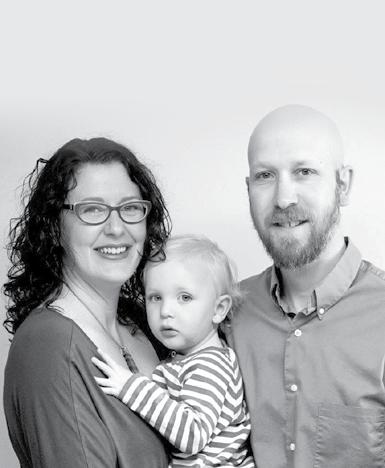
We strive to provide individualized, whole-person treatments in a comfortable, professional setting. Classic Traditional Chinese Medical (TCM) diagnosis and treat ment gives the best treatment available for each person.
This month, we are featuring the Covid Kit, which includes the high-quality Chinese herbal formula “Jade Wind Screen.”This formula has been used for centuries to strengthen the protective capacity of the immune system against cold and flu. Also included is the “Cold Killer” formula, which is used for the early onset (days 1-3) of cold/flu symptoms. Detailed instructions included. Kit cost is $100. Call today: 402-650-7715


Get Help Caring for Your Property! Do you have a growing list of home repairs and renovations that need to get done? To stay ahead of home maintenance projects, get assistance from a local handyman. Turn to Peterson Inspections & Home Repair when you need home repairs in Omaha, Lincoln, or Fremont, NE. We’re equipped to take on a wide range of repair services.

Instead of reaching out to multiple contractors, get efficient customer service from our company. Call us today at 402-720-9010 to get professional assistance.

Vein disease isn’t about appearance as much as it is about your health. Do you suffer from leg pain, swelling, restlessness, and skin discoloration? These are very common symptoms of vein disease. Left untreated, it can cause serious health issues. At VENUS, you may be surprised at how easily and comfortably you can improve your daily life. There is no downtime to recover, there’s no sedation or heavy medicines needed, and treatments are covered by medical insurance. You can go right back to work or exercise, and you will feel better and look better, too.
VENUS Vein Clinic—Your Go-To Vein Clinic. Don’t wait a day longer, call today at 402-979-VEIN (8346) or visit VenusVeinClinic.com.

discomfort, swelling, and
Suite 303
veins with Venus.
No Down-Time. No Pain. No Sedation.
Omaha,
8 a.m.–5 p.m. Monday through Friday

You
empower women facing breast cancer. When you partner with National Breast Cancer Foundation through a financial gift, you provide educational resources for those diagnosed with breast cancer and their loved ones; provide free mammo grams and other breast health services to people who can’t afford them, making sure that no one gets turned away from these critical services; and fund patient naviga tion programs that guide patients through and around the barriers of cost, fear, and misinformation when being screened for or diagnosed with breast cancer. Visit donate. nationalbreastcancer.org to learn more.
Stark Media was born out of a six-year stint as IT/desktop support for a large credit card processing company. I then stumbled onto an opportunity to make “videos” for that same company. I said yes. My role was to produce in-house corporate marketing videos. Having no real experience as a videographer, I had to adopt the “fake it ‘til you make it” mentality...and it worked.

Fast forward three years. The excitement was missing, I was yearning for more meaningful projects. I became complacent and uninspired. Although it did put food on the table, I yearned to produce something with more impact and meaning.
Then along came another opportunity to help produce a short film about Alzhei mers. That changed the game for me. This is what I was reaching for. Real stories, real people who inspire and provoke viewers. It was the most challenging endeavor I had done at the time.
Understanding how to tell a strong story in the least amount of time, and how to engage the viewer for the duration of the piece, is not easy. Our purpose is to make something powerful, moving, and memorable. Recently, we produced a “Memory” video for a retired couple. Their story was captivating and powerful.
We are bursting with creativity! We will work with you to ensure that your story is beautifully told in a way that suits your objective.
Our team is constantly exploring and learning about the most com pelling and impactful ways of pro ducing and sharing video content.
anything
value
input.
From online training videos to large-scale documentaries, we will ensure your films fit your budget.

Last minute shoot? Our process es accommodate for all eventuali ties to ensure a smooth experience.
Our producers and videographers will guide you through the filmmak ing process and work tirelessly to make it easy for you from start to end.
Home ownership is rewarding and is often one of life’s most significant financial investments. Maintenance and home improvement are essential to preserving a home’s value but can seem overwhelming at times. Do you dread the thought of painting your home or window trim? Does your deck need to be stained? Do your gutters and down spouts get clogged with leaves? Are you looking for solutions? Albracht Perma-Siding & Window Co. is ready to help you with high-quality products that will save you time and improve your home’s exterior.
A family-owned business for over 70 years, Albracht Perma-Siding & Window Co. began in the 1950s. Al Al bracht worked in the home improvement industry for sev eral years before deciding to purchase a franchise location of the well-known Perma-Stone Company. Perma-Stone installed cultured, colored stone on the front of homes. The company transitioned from stone to aluminum siding, then steel siding, and eventually vinyl siding. The business grew to include roofing, storm doors, and windows. It was renamed Albracht Perma-Siding & Window Co. in the early 1970s to reflect the expanded service offerings.
Tom Albracht worked for his father at Albracht Per ma-Siding & Window Co. in the late 1970s and early 1980s. Tom aspired to become a professional golfer and spent two years as an apprentice and assistant at a local country club before pursuing a different career path. He was a sales representative for a national company for several years and was offered a promotion. However, the offer required relocating, and Tom and his new wife, Kristi, did not want to move. His dad was ready to retire at that same time and asked Tom to take over the business.
The timing was right, and Tom was ready for the chal lenge, so he purchased the business from his father in 1987. “I always knew I could sell, and I received good sales train ing and learned time-management skills during my time as a sales representative,” Tom recalls. Tom and his brother Steve, Marketing Director, now run the business together.

The company’s product line gradually expanded and now includes vinyl siding, roofing, decks, doors, windows, and a gutter protection system. “Vinyl siding provides the best value for your home. It has withstood the test of time, it’s attractive, and it’s durable,” Tom says. “Vinyl windows are very energy-efficient and provide the best value for your money.” Composite decks provide durability and low maintenance. The company offers ProVia doors and windows, and the doors are made of 20-gauge commer cial-grade steel. The Leaf Sentry gutter protection system fits existing gutters to prevent gutter and downspout clogs.
Why choose Albracht Perma-Siding & Window Co.? One reason is that the company purchases its products
By Angella Arndtdirectly from manufacturers, which benefits its clients. “For ex ample, as a direct dealer for ProVia, we get competitive pricing and can take better care of our clients because we don’t go through a distributor,” Tom notes. Although independent trade contractors install the products, Tom affirms that Albracht Perma-Siding & Win dow Co. guarantees the work. Tom and Steve take pride in providing outstanding customer service. “We are responsive to our clients’ needs. We set realistic expectations and we don’t overpromise. My dad always said that if you take care of your customers, your customers will take care of you. We have a lot of customers, but I have also made a lot of friends.”
Tom offers some advice for homeowners in the process of hiring a home improvement company. First of all, find out how long the company has been in business. Ask about their track record. The company should inspire a feeling of trust. “Trust is a big deal. We have over 70 years of experi ence in the business.” Ask questions to ensure the company will meet your needs. How much experience do they have with your type of project? What is their availability? Ask for references. Additionally, the company you select should be licensed, bonded, and insured. Asking questions in advance will help you hire the contractor who is best able to meet your needs.
Tom enjoys meeting and interacting with people and finds his work rewarding. “We live and work doing things the right way. Our products provide attractive and durable home improvement solutions.” Tom remarks that much of their business is referral-based. “We improve people’s homes, but we are also improving their lives by giving them more time to do things they enjoy.”
Albracht Perma-Siding & Window Co. is located at 10723 Mockingbird Drive, in Omaha. The office and show room are by appointment only. Call 402-331-4666 for more information or to schedule an appointment. You can find them online at permasiding.com.
L-R: Tom and Steve Albracht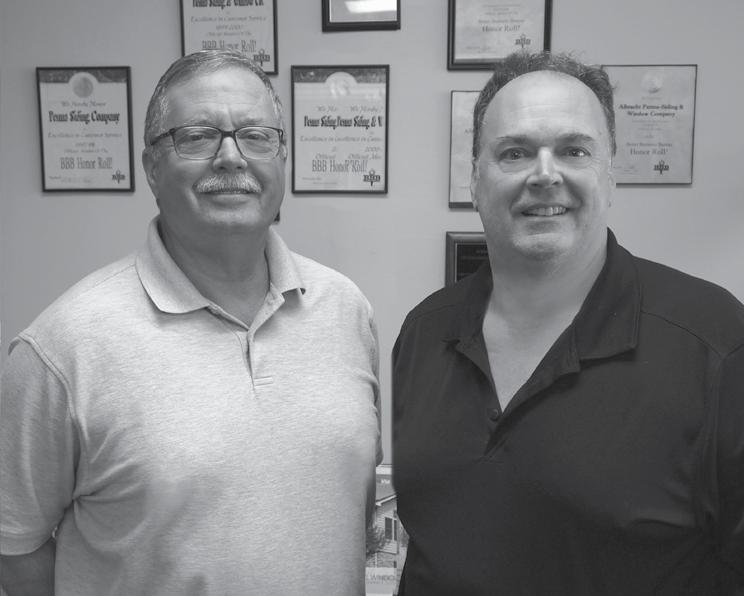



It’s said that the eyes are the window to the soul. Our eyes and our smile are the first things that people notice about us, and we want them to look their best! Most of us spend precious time applying makeup to the eye area on a daily basis. What would you do with that time if your eyes looked the way you wanted them to right when you woke up?
Eye enhancement procedures offer us that freedom. Permanent eye enhancements such as eyeliner and brow treatments are maintenance-free alternatives to conventional makeup and can last for years with proper care and occasion al touch-ups. Other eye enhancements, such as microblading, threading, waxing, lash lifts, and lash extensions require more frequent touch-ups but are also timesaving conveniences.
Surgical eyelid lifts address drooping and puffiness. All of these techniques help define the eye area, creating the illu sion of larger, brighter, and more youthful eyes.
Permanent makeup tattooing involves tiny needles and rotary pen-like devices used to insert pigment into the skin. The pigment is tapped into the skin with a small instrument wielded by a licensed aesthetician or other trained profes sional. You can opt for soft or bold colors to line your eyes, define your brow, or add shading to your eyelid.
Eyeliner is a popular permanent makeup choice. We all know how difficult it can be to get that perfect outline with a



Introducing our most effective Life can’t wait!
Lose up to 18 pounds and 5 inches off your waist in your first 4 weeks!

Call or stop in today!
liquid or pencil liner. With permanent eyeliner, we can choose a bold or natural look. A procedure known as “tightlining” adds pigment between the layers of lashes to darken the lash line. It looks very natural. The procedure takes between one and two hours, and you should avoid applying eye makeup for a week afterwards.
Many people who are happy with their permanent eyelin er opt for eyelash extensions to match. Lash extensions can be natural or synthetic. Natural fibers such as mink, sable, or silk look very realistic, but synthetic lashes may be a better choice for allergy sufferers. Eyelash extensions are offered in a wide variety of lengths, curls, and fans. It’s important to make sure that your technician uses a medical grade glue with no formaldehyde. The initial application takes about two hours, and touch-ups are required every couple of weeks, depending on how quickly your natural lashes shed. To extend the life of your lashes, avoid using oil-based eye products, cream-based eyeliners, and waterproof mascaras.
PHD Hair Solutions specializes in alternative hair options that won’t limit your lifestyle!

Losing one’s hair is a personal and potentially painful journey and Karen-Anne excels at helping someone create a whole new image or restoring a look that has been lost. She can help you regain your confidence with a new look through customized hair systems that look, and, more importantly, MOVE just like natural hair. Specializing in bonding techniques, including no-shave methods.
Shops of Legacy 402-334-1030 2835 South 170th Plaza, Ste. 210 Tower Plaza 402-392-7300 325 North 78th Street
Ranked A Best Diet For Nine Years Straight


Call today to schedule an appointment 402-614-8440
333 S 78th Street #120 phd-hair-solutions.com

Karen-Anne Misiewicz, Owner/Stylist















don’t want the extra weight of extensions, consider a lash lift. For this treatment, a technician curls your lashes with a curling rod, then sets the curl with a chemical solution. No extra lashes are added on—the effect comes from lifting your lashes from the root. The lift lasts about six weeks, and you should wait 24 hours to apply mascara.


To achieve a perfect brow, some of us turn to tweezers, pencils, or both. Mi croblading can give you an impeccably shaped brow. A trained technician uses a tiny blade that creates slices in the skin and deposits pigment. Microblading is popular with individuals who have suf fered hair loss from medical treatments. Touch-ups are recommended every year or two years to maintain shape, color, and detail.
Eyebrow threading is an ancient procedure that originated in the Middle East centuries ago and is still used today. Threading is performed by an aesthetician using a double-stranded cotton thread. The thread is twisted around a single hair or an entire row of hairs, then the hair is pulled out from the root. This is less painful than tweezing and requires only monthly touch-ups.
Waxing is the fastest way to remove eyebrow hair. A warm or cold wax is spread over the hairs that need remov ing. A paper-like or cloth-like strip is then pressed onto the waxed area and ripped off, taking the unwanted hairs with it. Only the hairs that have been covered by the wax are removed, allowing your stylist to help you achieve the perfect brow shape. The procedure is usually repeated every six to eight weeks.
As our skin ages, it gradually loses elasticity. This, combined with the pull of gravity, causes excess skin to collect on our upper and lower eyelids, resulting in drooping, puffiness, and wrinkles. A significantly droopy eyelid can even impact vision. Eye lift surgery, known as blepharo plasty, removes that excess skin, redefining the shape of the eye. It can be performed on the upper or lower eyelid (or both) by a plastic surgeon specializing in facial procedures. Insurance will typically not cover the cost of this popular surgery if the purpose of the surgery is cosmetic only.
To keep your bright-eyed look, visit your favorite spa, salon, or consult a specialist today.
Sources for this article included: today. com, hopkinsmedicine.org, and healthline.com.
Be beautiful. Be brilliant. Be bare

Isn’t it every person’s dream to be confident in their skin? Whether it’s the ability to skip the makeup or the extra pep in your step after getting a wax.
Specializing in lash lifts, facials, microblading and much more…

Heather Rosenthal, Owner Licensed esthetician and permanent color technician 16+ years experience.

or text to schedule
S 144th St.,

24



Saturday, Nov. 26th 2-6PM
The Living Room at The Mastercraft Building 1111 N. 13th St. (Arrow Door 2) Omaha, NE 68102 FREE ENTRY (Donations Appreciated)
Come celebrate Small Business Saturday 2022 with us by supporting local small businesses from right here in our neighborhood! There will be a wide variety of items to choose from to kick off your holiday shopping! Mingle while shopping from our 40+ local small businesses, enjoy live music, food, raffle prizes, fun activities and more! You won’t want to miss this FREE event so mark your calendars and bring your friends!
Event Link: https://www.facebook.com/events/857368608501596
Follow Us on Facebook BlessedLifeEvents@gmail.com
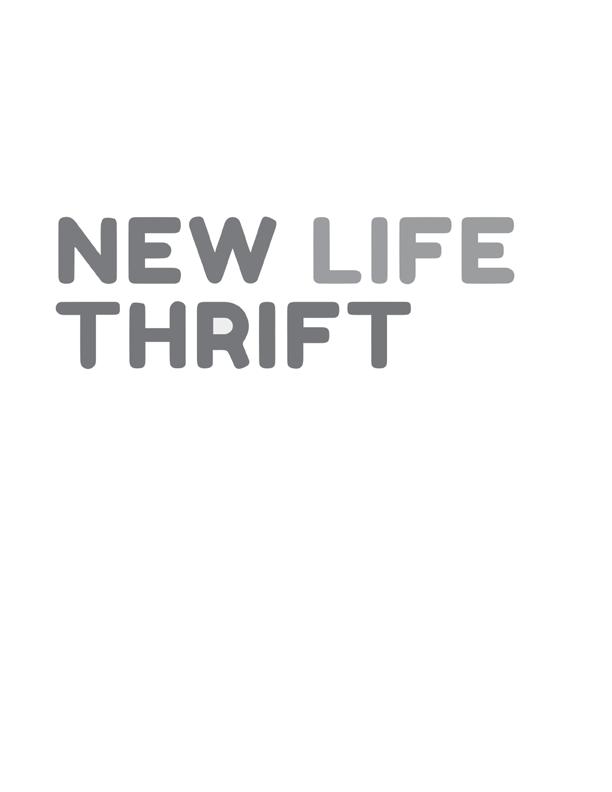

 Andre and Bunny Right
Andre and Bunny Right
If you lived through the era of wall-to-wall shag carpet and avocado green appliances, the idea that 1970s style is making a comeback might have you shaking your head, but there was more to the ’70s than that! De signers tell us that the surge in popularity for 1970s interiors goes beyond the visual appeal. There’s growing nostalgia for the freewheeling spirit of the age that stood for freedom of expression and embraced new ways of living. The lock downs of recent years have unleashed the desire to be untethered and free of restrictions. The decadence of the 1970s had a certain uncensored quality that speaks to people’s yearning to indulge in a festive atmosphere of wild fun. The age of disco and hippies has come back in full force, and it’s hitting home—literally!
The 1970s were known for bold, over-the-top interior design that featured psychedelic color schemes. Colors like vivid citrine and mustard yellow energized the homes of 50 years ago. Ev erything from shag carpet to wall color came in avocado green, harvest gold, and burnt orange. Today’s adaptations of the 1970s design are slightly more subtle. New trends are cherry-picking from the era, drawing inspiration from warm color schemes— muted earthy chocolate brown and smokey cognac mixed with buttery neutrals—in a way that feels fresh.
It’s no surprise that the decade known for excess embraced the love of lounging. Sunken living rooms, designed as conver sation pits, were furnished with lush, low-slung furniture and plushy shag carpets. Velvet furniture was a big hit in the 1970s
and lives on in modern design. Recapture the joy of decadence by introducing a velvet couch, or even just a velvet cushion, paired with a fringed, plush area rug that feels wonderful underfoot!
It seems that the modern-day desire to cast off the re straints of fashion formality is taking hold in our living spaces, as well. As society evolves, the desire for all things comfortable, oversized, slouchy, and soft reflects a move toward the relaxed lifestyle people are seeking. Elements of 1970s décor feature cozy and warm elements that people want to bring into their homes. The era that coined the expression “chillin’ at the pad” has evolved to embrace modern open floor plans that encour age human connection and entertaining. When bathed in warm earthy hues and lush furnishings, these inviting spaces

Dr. Delaney is a double board certified Reproductive Endocrinologist and OBGYN. A native Nebraskan, “Abby” was born and raised in Omaha NE. She graduated Suma Cum Laude from Creighton with a degree in Biology. After college graduation, Abby headed across town to attend medical school at the University of Nebraska Medical Center. As a medical student, Abby was awarded the Louise Nolan Scott Award for Academic Excellence in OBGYN and was nationally recognized by ACOG with the John Gibbons Medical Student Award. She stayed at UNMC for her residency where she was given multiple awards for her excellence in teaching and research. After residency, Abby completed her fellowship training at the prestigious Mayo Clinic in Rochester, MN.
Abby’s research interests include molecular mechanisms of endometriosis. Her fellowship thesis was nationally awarded the Society for Reproductive Investigation President’s Award in 2015. Dr. Delaney has published or presented on a myriad of topics throughout the field of Reproductive Endocrinology and Infertility including IVF, primary amenorrhea, obstetric outcomes with ART, and ethics in reproductive endocrinology.
Dr. Delaney’s clinical interests include:
polycystic ovary syndrome,
unexplained infertility and
recurrent pregnancy loss.
Abby is thrilled be joining the team at the Heartland Center for Reproductive Medicine. Her practice will offer the full spectrum of reproductive endocrinology and infertility.
Personally, Abby lives in Elkhorn with her husband Brian and their two children, James and Lily. Brian is an internal medicine physician at the VA and the two met while studying together in medical school. Abby is a die hard “JaySker” having attended both institutions for her training. She is an avid golfer and loves swimming, reading and oil painting. She loves spending time with her family and friends and giving back to her community.



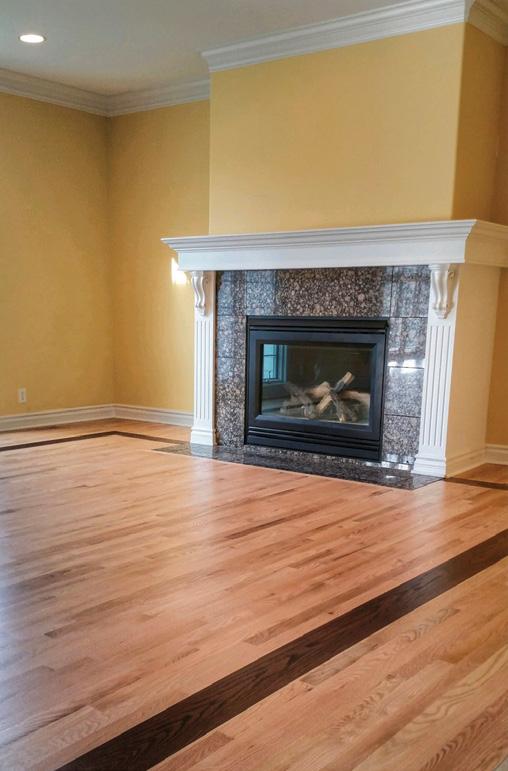








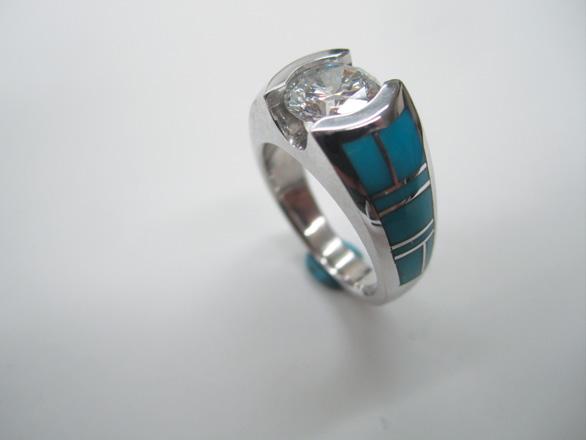




and










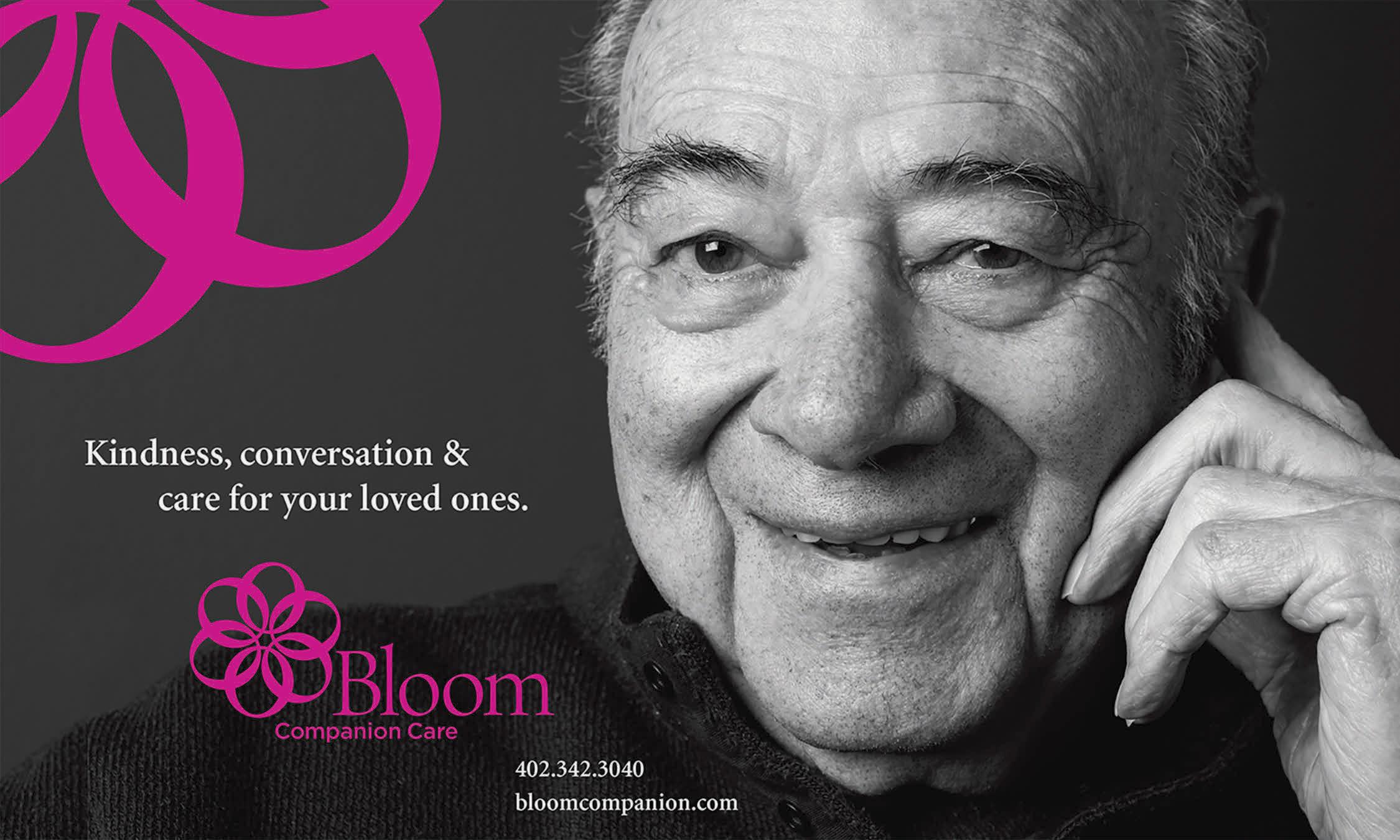
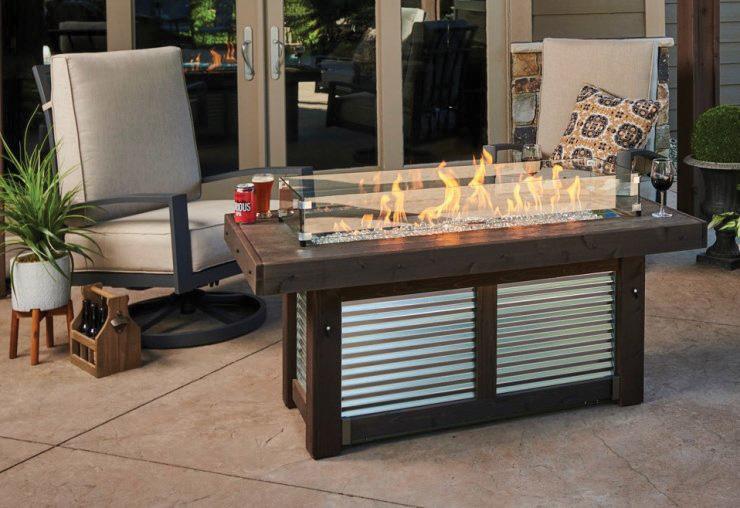


create a calm and sophisticated vibe that helps people feel grounded.

The 1970s spoke to woodsy textures and nature-inspired materials found in wood paneling and playful florals. Rattan and wicker furniture achieved widespread popularity with a lightweight, casual look that still appeals today. Incorporate rattan pieces with various styles for a vibe that feels both current and nostalgic. Adding a statement accent piece such as a hanging rattan egg chair is a wonderful way to lend a 1970s feel to a space, and it’s a fun and welcoming way to create a reading nook in a bedroom or living room. Pay earthy homage to the 1970s with accent décor that helps a space feel grounded but still light. Achieve the look with mac rame, fringe, crochet, house plants, faux animal rugs, and botanical prints.
In the age of 1970s flower power, walls that weren’t lined with wood paneling were adorned with bright and colorful wallpaper. No shrinking violets in sight! From oversized geometric shapes to bright florals, the resurgence of wallpaper featuring maxed-out florals and daring color echoes the ’70s spirit of “Go big or go home!”

If you aren’t ready to go full-on retro in your living space, a great option is to bring some key 1970s design trends into a mix of other styles to achieve a personal look. No matter what your style, vintage décor can add personality and flair to any room in your home. Start with small accents. Incor porate a macrame hanging plant-holder or wicker lampshade within an otherwise contemporary space and see your space take on a new air of modern bohemian.
There’s something special about embracing an item that was designed and well-built half a century ago. Generations who have grown up with a relatively disposable society, where styles change quickly and aren’t built to last, may not realize that 1970s furniture was built to stand the test of time and can still be found in excellent condition. Consign ment and secondhand stores, as well as high-end furniture stores, are great places to search out unique and original finds. For something truly unique and groovy, work with a custom furniture maker. An interior designer can help you bring your look together in a cohesive way, savor ing the ’70s in even the most modern of living spaces.
Sources for this article included: hgtv. com, houzz.com, and homesandgardens.com.





 By Leslie Byrne
By Leslie Byrne
For many Americans with diabetes, the diagnosis was a big surprise during a routine visit to the doctor.
The diagnosis can feel overwhelming, but with the right care and the latest medical advancements, diabetes can be just one part of a busy and active life. By knowing the symptoms and who is at risk for this chronic disease, many of us can avoid reaching blood sugar levels in the diabetic range. It’s important to have a good understanding of the disease and how to decrease your risk.
There are two main types of diabetes: type 1 and type 2. Both affect the way the body regulates blood sugar (glucose). Glucose is found naturally in our blood. To support the body, glucose needs insulin. Insulin is a hormone produced in the pancreas that regulates the body’s metabolism of carbohy drates, fats, and proteins. With type 1 diabetes, the body sim ply does not produce insulin. Type 1 is often called juvenile diabetes because it is usually diagnosed when someone is a child or young adult. Heredity, certain viruses, race, or ethnic ity can increase the odds of being diagnosed with type 1.
People with type 2 diabetes are able to produce insulin, but their cells have become resistant to the insulin that their body makes, and the pancreas is unable to make enough in sulin to overcome this resistance. Instead of moving into your cells, where it is needed for energy, sugar builds up in the bloodstream. Type 2 diabetes can be caused by an unhealthy diet and lifestyle. It often develops after the age of 35 years
and is therefore commonly called adult-onset diabetes. Many people with type 2 diabetes are overweight and have a family history of type 2 diabetes. People of African American, Latino, or Native American descent are at higher risk of developing type 2 diabetes.
In the United States, around 34 million people (about 1 in 10) have diabetes. Another concerning statistic is that 96 million American adults (about 1 in 3) have what is known as pre-diabetes. Pre-diabetes is when someone has a blood sugar level that is higher than normal but not so high as to be considered diabetes. However, without lifestyle and dietary changes, this can easily develop into diabetes. A blood test at an annual physical is usually how someone learns they are pre-diabetic. It is an opportunity for the patient to make changes to ward off the disease.
Common symptoms of diabetes include frequent uri nation, increased thirst, feeling tired and hungry, vision

problems, and wounds that heal slowly. During an annual physical, a doctor will usually have a patient’s blood tested for diabetes. The most common blood test to diagnose diabetes is the A1C test. A nor mal A1C level is below 5.7 percent. A lev el of 5.7 to 6.4 percent indicates predia betes, and a level of 6.5 percent or higher is an indication of diabetes.
To treat type 1 diabetes, a person must take insulin several times a day because the body does not produce the hormone insulin on its own. An insulin pump is a convenient device that gives the patient small, steady doses of insulin throughout the day.
Some people with type 2 diabetes are able to control it by eating a healthy diet and being physically active. If medicine is needed, the medication can be a daily pill or injection. Things we can do to avoid type 2 diabetes include attaining and maintaining a healthy weight, exercis ing regularly, limiting alcohol, quitting smoking, and keeping blood pressure under control.


People with diabetes are often treated by an endocrinologist, a medical doctor who specializes in diabetes and hormone disorders. People with type 2 diabetes should see their primary care doctor regularly to monitor their diabetes and to learn about the latest medications and treatments. Anyone with either form of diabetes should have an annual eye exam. Working with a dietitian to help adopt a diabetes-friendly diet that helps regulate blood sugar levels is highly recommended.
Some studies show that type 2 dia betes can be reversed with permanent changes in diet and lifestyle. There is a lot of new research and information about reversing diabetes that you can discuss with your doctor. If diabetes is not closely monitored and treated, it can increase the risk of developing serious medical problems such as heart disease, nerve damage, kidney damage, eye dam age, or stroke.
If you are diagnosed with pre-dia betes, use that time to make changes so diabetes does not develop. If you do develop diabetes, maintaining a healthy blood sugar level can become a daily part of your life; it doesn’t need to take over your life!
Sources for this article included: mayoc linic.org, cdc.gov, jdrf.org, diabetes.org, and niddk.nih.gov.
Everyone is welcome
Adults, Adolescents, Children
Free Mental health services for Young adult/teen moms (ages15-25yrs.)

Court related cases
Substance abuse
IOP/OP Classes
If you are willing to put in the work, we can help you! Call today. 402-933-7577
All forms of pay accepted.

1941 S. 42nd Street, Suite 106, Omaha, NE 68105 www.bfscounseling.com
motion with

Neck & Back Pain
Sciatica & Nerve Pain
Painful Scars
Pain & Spasms Women’s Concerns Shanna Paopao, PT


Call now to see if Myofascial Release is right for you!
2504 S. 119th St. Insurance Accepted
SGB (Stellate ganglion block)
Very effective in stopping hot flashes in post-menopausal women.

—Also restores taste and smell from COVID.
Nestled among historic buildings in downtown Ralston is the Debra Joy Groesser Fine Art Gallery. Come on in! The gallery houses the work of nationally acclaimed local artist Debra Joy Groesser, who special izes in landscapes, seascapes, and portraits. The intimate gallery packs a lot of punch for the visitor. In addition to Debra’s oil paintings, you’ll find gift items for every budget adorned with Debra’s art, as well as one-of-a-kind


functional and decorative woodworking pieces created by her husband, Don. “When we got married, he told me that he dabbled,” Debra recalls. “I had no idea how tal ented he was!” Don’s work consists of handmade wood pieces like cutting boards, cheese boards, dishes, vases, and rolling pins.
Debra’s first public art display was when she was 3 years old. She was a fan of the TV show Romper Room, and one of the segments showcased children’s art. Deb ra’s mother sent in one of Debra’s drawings, and it was selected for the show—one of her early masterpieces, right there on the TV screen.
Debra was in fifth grade when her family moved
By Kate Beitingto Omaha. She was already consumed with drawing, art, and illustrating. “Even as a young girl, I paid atten tion to the accuracy of whatever I was drawing,” she says. “I would see where shading was important, or various colors. I tried to mimic the light on whatever I was painting.” She re ceived her first set of acrylic paints when she was 12 and advanced to oils at age 14. “That medium spoke to me
and I was hooked!” Her artist’s eye and talent is on display at her gallery—glimpses into everyday life interpreted by an artist who has spent a lifetime honing her craft.
As a student of Impressionist art, Debra is especially fond of the plein air style of painting, which is the Impressionist technique of painting outside, capturing the look and feel of light and atmosphere. “My husband encouraged me to follow my dream,” Debra shares, by sending her to a workshop in Oregon in the 1990s. “I found a mentor in the workshop teacher and began to really see what I could do,” Debra says. “Since then, I’ve traveled around the country and overseas, honing this technique. I found my calling!”
Debra is President and CEO of the American Impression ist Society (AIS), a national nonprofit art organization whose purpose is to promote the appreciation of Impressionism through exhibitions, workshops, and educational opportu nities. Debra had the opportunity to visit Monet’s garden in Giverny several years ago. “Standing where Monet stood, looking at the lily pond, I knew I was where I needed to be artistically. Painting outdoors connects me and feeds my soul.”
Debra was diagnosed with breast cancer in late January; she had discovered a small lump just weeks after her annu al mammogram. “I wasn’t doing my self exam like I should have, as I thought the mammogram would spot any issues,” she says. The diagnosis has brought her both inspiration and perspective. “I am so lucky and blessed, and it has inspired me in many ways. I want to encourage others.” Debra began a
We professionally manage, clean, and provide a low vacancy rate for single family homes and apartments.
• Low monthly set-not percentage based-fees
• Monthly checks to owners
• 24/7 online portal for owners and tenants
• High rate occupancylow rate vacancy

• Full-time maintenance24 hour emergency line
• No up-charges on maintenance, materials or labor
• Strict adherence to city and county regulations
• Professionally handled late payment, evictions or other notices
painting on her first day of radiation treatments and finished it the night before her last treatment. Entitled Faith, Hope and Healing , the 48x36-inch seascape expresses her cancer jour ney. She currently has giclee prints available of this piece.
This is not the first time that Debra has been artistically inspired by difficult circumstances. She relied on her deep faith during her father’s cancer struggle years ago. The result was one of her best-known pieces, a seascape entitled Faith, Strength, Perseverance . The painting captures ocean waves relentlessly hitting the cliffs and shore. “As horrible as those experiences were, I walked through it and was inspired,” she says. “Through my own cancer journey, I revisited those emo tions again. Just like those cliffs, I am still standing.”
During the pandemic, Debra created several online drawing lessons for her grandchildren, and people started asking her to make them public. “People were looking for things to do,” she points out. You can find them at debrajoygroesserfineart.com.
You can see Debra’s work at several locations around Omaha, including a portrait of Dick and Mary Holland at the Holland Center downtown and paintings at Methodist Women’s Hospital, Midlands Hospital Mammogram Center, and a mural at the Jaipur Dundee. Art is also displayed at a local favorite Ralston eatery owned by her son Brad. At the Sojourn Café in Ralston, you get great food and a brief tour of Debra’s work.


Debra Joy Groesser Fine Art Gallery is located at 5615 South 77th Street, in downtown Ralston. Call 402-592-6552 or visit the gallery website at debrajoygroesserfineart.com.
Call me today for a FREE consultation. 402-905-2247 OKomaha@gmail.com | okomaharealestate.com Locally owned and managed















A child’s positive experience with the dentist starts with the child’s first visit, at one or two years old. At this time, children have a healthy set of erupting teeth and rarely have any negative issues to address—which makes the experience more likely to be positive! The first dental visit covers tooth brushing, teeth counting, assessment of any concerns, and fluoride treat ment. It’s an educational visit, during which parents learn how to prevent or limit tooth decay and cavities through a healthy diet and limiting sugary drinks (this includes juice!).
In the past, parents were told to wait until all permanent teeth erupted before considering orthodontic treatment. However, just as a younger tree can be encouraged to grow in a particular direction, children’s jaws and facial bones can also be encouraged to grow in more desirable directions. The importance of early, interceptive treatment is why Dr. Lisa Strunk of Pedodontics, P.C., specializes in both orthodontics and pediatric dentistry.


 By Charlene Pierce
By Charlene Pierce
Dr. Strunk decided to specialize in ortho dontics because, as she points out, “pediatric dental needs often evolve naturally into orthodontic needs.” Many problems that are easily corrected in younger, school-aged children cannot be fully corrected when treatment is delayed until the teenage years. Aside from shortening treat ment time, interceptive treatment has many benefits.
Dr. Lisa Strunk, DDS, MS, MSSunridge Village would like to say thanks to our veterans, and remembering all those that served our country!
It preserves space for teeth to erupt. It allows a child to grow more symmetrically by influencing jaw growth. It reduces the risk of trauma that can be caused by protruding front teeth, and it reduces the need for extraction of permanent teeth.
A pediatric dentist evaluates the teeth and how they come together when a child bites and chews. The pediatric dentist looks for signs that the upper and lower jaws are growing proportionately and whether the upper jaw overlaps the lower jaw appropriately. The goals are to determine specific growth patterns and establish good habits at an early age. Some habits, such as mouth breathing and thumb sucking, will affect the an gulation of teeth and the growth of the jaw forward or backward.
An integral part of early dental care for children involves guiding eruption and development of the teeth. Children ages two through six years usually have 20 primary teeth. Each one is significant because it holds the space for the permanent tooth that is developing underneath it. If a baby tooth becomes decayed, it loses part of the lateral surface that maintains the space for its successor. Early detection of a cavity not only re sults in easier treatment but also maintains the integrity of the dentition, so permanent teeth have more space to erupt.
Exciting things start in your child’s mouth near the ages of five and six! Their front teeth start becoming loose, and new molars sneak into the back. Parents should be aware of this eruption sequence so they can step up their brushing on new back teeth. Once the teeth have fully erupted, the dentist can apply a sealant to the occlusal pits and grooves on the top surface. This protective coating is invisible and will protect the tooth from bacteria and cavities.
Just like a large car trying to park in a compact space, a permanent tooth that erupts into a space too small for it may remain stuck or be impacted. Digital x-rays reveal develop ing problems so the pediatric dentist or orthodontist can intercept and make corrections before the problem becomes more extensive. The first panoramic x-rays are taken between the ages of six and nine and then every three to four years afterward. The consistent observation allows for correcting a narrow jaw or removing primary teeth to allow for normal eruption and growth of the permanent teeth.
The goal of initial pediatric treatment is to create the best possible environment for permanent teeth to erupt. The dentist is focused on the big things, such as jaw problems, horizontal and vertical bite problems, modifying growth, expanding the arches, and controlling habits. “Growth modification is more effective during a child’s growth spurt, when the bones are still growing,” Dr. Strunk concludes. “As an part of early orthodon tic treatment, growth modification is about preventing more serious problems from occurring at a later age.”
Pedodontics, P.C., has been providing complete dental care to the children of Omaha for over 60 years. Dr. Strunk, together with Dr. Dana and Dr. Buss, welcome the chance to keep your child’s smile bright! They want your children to have the best opportunity for a healthy and successful life with healthy teeth and beautiful smiles.

To make an appointment with the pediatric experts at Pedodontics, P.C., call 402-330-5913. To learn more, visit pedodonticspc.com. The office is located at 2521 South 119th Street, in Omaha.


November is national Adopt a Senior Pet Month, the perfect time to save an older dog’s life by providing a for ever loving home. What you will gain in return is a loyal com panion who might be just right for this chapter of your life.
Do you know what constitutes “senior” status in a dog’s life? An animal’s senior status is linked to the typical lifes pan of its breed. Generally speaking, smaller dogs live lon ger than larger dogs, and their senior status runs in parallel to this. Large breeds like Labradors are considered seniors when they reach five years. For medium-sized dogs, it can be about seven or eight years. Smaller breeds are senior at ten years or so. Remember that advanced age in dogs is quite like advanced age in humans. It does not indicate that the animal is feeble—think of it as a time of mellowing.
Even if you have never had a puppy, you know they are bundles of energy. They often seem to be on a search and destroy mission—whatever they find, they chew. They are easily distracted because the world is new to them, full of interesting smells, sounds, and sights. They may chase squirrels they can never catch. They may bark at the neighbor’s pet, at the mail carrier, at the kids playing across the street, or at every single car that drives by. They can and should be trained, of course, but that takes a great deal of time and patience.
Senior dogs, on the other hand, have been there, done that. They know they’re not going to catch that squirrel, and they know that not every car is worth a bark. Mature dogs are generally calmer and more tolerant of children. Such dogs provide an opportunity to teach children—in cluding teenagers—the responsibility that comes along with the love and loyalty of a dog.
By Jackie Byersbehavior. In many cases, mature dogs are abandoned because of the owner’s changed life situations. Such changes may include divorce, employment changes, new landlord restric tions, changes in the owner’s health that preclude pet owner ship, or even the owner’s death. Becoming a rescue candidate does not mean a pet is a “bad dog!” If you’re looking for an older dog, call your local animal shelter or humane society. You can also contact a local (or national) rescue organization to find out what they require before fostering or adoption.
Older dogs often learn more easily than puppies, as they are less distractible.
Whether you are adopting from friend or family mem ber, a shelter or humane society, or a breed rescue organization, you need as much information as you can get from the current caregiver. Where did the dog come from? How many homes has this dog al ready had? What is the dog’s personality? Is the dog potty-trained? Does the dog get along well with children and strangers?
Next, you need to check with a veterinarian, who can tell you much about your chosen dog’s overall health. Standard exams include checking the condition of teeth and ears. Blood count, heart and kidney function, disease history, and structural conditions are also typical procedures. If the dog is missing any key vaccinations, the vet can set up a schedule to get them done.
Mature dogs are housebroken, usually accustomed to a kennel, and quite familiar with the come, sit, stay routines. They tend to enjoy leisure and appreciate naps. They have many years to give love and companionship, but they don’t need your constant attention.
You can forget the old saw about how you can’t teach an old dog new tricks. Older dogs often learn more easily than puppies, as they are less distractible. If they need a refresher course on any basic behavior, they re-learn with out much fuss. If you want them to acquire a new skill, they will usually learn it quickly.
Sadly, many senior dogs will end up at shelters for rea sons that have nothing to do with the dog’s personality or
The vet can also tell you whether the dog has a chip implant. If so, it needs to be updated with your information so you can be notified if your dog is lost and found. Vets can recommend the best food and treat options and can help you decide what equipment your pet needs, provide helpful training hints, and suggest how best to help the dog fit into your lifestyle.
Remember, advancing age doesn’t mean you have to get less out of life! This is as true for your furry friend as it is for you. Consider allowing a senior pet to join your family, and get ready for the kind of mellow companionship we could all use a little more of these days.
Sources for this article included: fitbark.com, helpmup.com, and petwebmd.com.
There is a very technical finance term that describes Mr. Market’s 2022 summer temper tantrum, and that term is CRAZY! There were days when the market would open calmly and then, following lunch, a press release from the Fed would send the market into a tail spin. Then, 20 minutes later, another burst of trading would drive it back up again. We experienced months with explosive 16.2 percent gains followed by a month with an equally explosive 12.3 percent drop.
According to the financial media, these gyrations were investors’ reactions to the Fed’s actions to reign in our un preceded rate of inflation. To anyone with a dollop of com mon sense, this explanation doesn’t fly. The media has been correctly predicting the amount and timing of all the Fed rate hikes since January 1, 2022, yet they also report that investors are sitting on pins and needles for the reports to be released. When the totally predictable occurs, the market goes bonkers. The assumption is that the Fed will slow the economy into a recession and dramatically reduce the value of the economy. If this is true, then the logical thing to do is to reduce the value of the market by an amount equal to the reduced value of the underlying companies. Based on this assumption, the market’s gyrations are nonsensical.
Let me provide you with a more reasonable explanation of these gyrations by relating the story of the elephant and the blind men. Four blind men are sitting by the side of the road when a guy with an elephant walks by. The blind men hear, smell, and sense the presence of something they have never experienced before, so they ask the owner if they can touch the elephant. He replies yes. One of the blind men approach es the elephant, grabs its trunk, and declares that the ele phant is a hose. Another grabs the tail and says the elephant is a snake. The third grabs a leg and proclaims that it is a tree trunk. The final blind man grabs a tusk and says it is a spear. The moral of the story is that if you examine only part of an object, you will get a false impression of the whole.
is built around massive server farms directly connected to the 13 major stock exchanges. The second that the market opens, their computers send out buy and sell orders with the objective of buying a stock on one exchange and, within a nanosecond, selling it on another exchange at a higher price. This may not sound like a way to make millions of dollars, but if you do it often enough and fast enough, the pennies start to add up.
Every day, approximately 80 percent of stock market trades are made by high speed traders. Their trading activity is built around massive server farms directly connected to the 13 major stock exchanges.
A second highly active trading group is the hedge funds. These are the crème de la crème of the trading world. They manage other people’s money. Most people are familiar with money man agers handling mutual funds, and hedge fund managers do a similar job. The difference is that the net worth needed to become a hedge fund client usually begins at $1 million. The hedge fund investment model is a highrisk, high-reward approach that often focuses on a single economic sector or industry. They rely heavily on the use of options that, when exercised, can dramatically change stock prices in a manner that is the opposite of their fundamental economic value.
The Wall Street media is like the four blind men in the story above. They act as if the market is a place where the majority of the participants are unemotional investors who make decisions based on careful financial analysis. In fact, many market participants make their buying and selling de cisions based on criteria other than the financial value of the underlying companies. I don’t have room enough to discuss all the other criteria, but you can get some insight from look ing at just a few.
Every day, approximately 80 percent of stock market trades are made by high speed traders. Their trading activity
Both of these are examples of the many major market participants who buy and sell stocks using criteria other than the financial fundamentals of the underlying companies. In doing so, they may buy and sell at prices that make no sense to those using the company’s financial fundamentals as their trading criteria. The good news for individual investors is that the impact of these alternative traders tends to be dramat ic only in the short term. In the long term, the market has historically been a reflection of the strength of the dynamic American economic engine.
Editor’s Note: George Morgan has five decades’ experience in all phases of the investment process. He is currently the Founder and Principal of Morgan Investor Education. His website is morganinvestoreducation.com.
The opinions voiced in this material are for general information only and are not intended to provide specific advice or recommendations for any individual. To deter mine which investments may be appropriate for you, consult your financial advisor prior to investing.
Yes, it is that time of year, when gardening is pretty much over for the year and all the living things in the garden are storing energy and winding down. Is it also time for you to relax? To take a well-deserved respite from the hard work of tending the yard? No! It is already time to get ready for next season, and the first thing I always try and do is take an inventory of my garden tools. Why do this when the season is over? It is the perfect time to see what you have and what you will need for next season.
You may have some tools that have seen better days or, in my case, some tools that have actually broken or fallen apart. I like to start by cleaning all my garden tools and then making a list of everything that I think is important to have for spring.
The first and foremost tool that every gardener must have is a hand trowel. It should be strong and sturdy. Do not settle for a cheap one! (I have broken several of these.) You will use this tool constantly for planting, potting, and transplanting, so it must be durable.
The second most important tool that you absolutely can not be without is an excellent set of pruning shears. You will use pruners continually. In fact, I have found it even more helpful to have several sets in different areas in my gardens.
The next all-important tool is a quality hoe. Since hoes
are specifically designed for garden cultivation, to get rid of weeds and prepare soil for planting, you cannot be without one. It also will save you a lot of back-breaking work by keeping you upright!
Good gardening gloves are very important. I keep several pairs around so I never have the excuse that I could not find a pair to put on. They have saved my hands and fingernails more times than I like to admit—when I do not use them, for one reason or another, I am always sorry.
The next item that you cannot go without is a round point spade. At the risk of being too obvious, you need a good spade to dig big, deep holes. Nothing works as well as a round point! I have tried to use a square point spade for this, and it just doesn’t cut it for me. (Is there a pun in there somewhere?)
Women’s Edition has been a great tool for our business. With their guidance on graphics and wording, we are getting calls and emails from great fitting customers, so the message is clear in regard to the problem we solve. We have been able to reach new customers on an individual basis. We are so happy to have formed this relationship. It helps us help our customers transition into senior living with a lot less stress!
 —Hannah Diediker, CSA
—Hannah Diediker, CSA

A steel spading garden fork/ pitchfork is also needed. You know, the scary-looking ones with the long points that always seem to be lying around in a barn in a horror movie. There is nothing better for loosening and turning over soil—it can break up big dirt clods and even rake up stones.
You also need a couple of good rakes. There are two standard kinds of rakes: a bow rake with the short prongs, and a garden/leaf rake with the long, floppy teeth. When select ing rakes, keep in mind that metal tines are the most durable, great for medium to heavy yard work duty. Plastic tines have the least amount of strength and are better for light duty—dried-out fallen leaves and such.
Depending on the size of your garden, you most definitely will need a wheelbarrow. I cannot live without a wheelbarrow! The ease with which you can load up a wheelbarrow and move it around while it is full of heavy and awkward materials is incredible. Sometimes I throw ev erything in there, including my hand tools, for easy pickup and transport.
A suitable garden cushion for your knees is a lifesaver—well, at least a knee-saver—during planting season. Of course, you also need a good garden hose and watering can. Watering cans are absolutely the best for watering container plants because the water gets down to the roots (and doesn’t make a mess of your patio or deck). A set of excellent loppers (used for pruning twigs and small branches) is wonderful. They are basically pruning shears with long handles that can cut through branches of larger circumference. I also keep a harvest basket in my gar den to carry just-picked flowers and vegetables. When not in use, it looks nice sitting in the garden, as well.
Some of this information may seem obvious to you, but you might be surprised how many people are not prepared with the proper tools when starting a gardening project. Gardening is supposed to be a fun, positive experience, so you definitely want to start out on the right foot with the tools to make your garden a grand success!
The best indicator of a good night’s sleep is not the number of hours but rather how we feel the next day.
If you feel tired and run-down during the day, you may not have gotten enough sleep—or you may not have gotten enough quality sleep.
Some people have trouble falling asleep at night, while others have difficulty staying asleep. In between are those who fall asleep easily and sleep a sufficient number of hours, yet experience excessive daytime sleepiness. If poor sleep habits are to blame for poor sleep, it’s possible to correct them with behavioral changes. If medical conditions are the cause of sleep problems, they need diagnosis and treatment.
With 25 percent of adults reporting they get insufficient sleep on 15 out of 30 days, it is a significant health concern. Regardless of the cause, experts say that lack of sleep affects reaction time, learning ability, mood, and coordination. They identify excessive daytime sleepiness as the source of a growing number of work accidents and car crashes.
Common sleep disorders include disruption of circadian rhythm, sleep apnea, and narcolepsy. While good sleep habits may be sufficient to reset the internal 24-hour clock, help may be needed with a true circadian rhythm disorder.

If you’ve ever had jet lag, you may have experienced a mild disruption to your circadian rhythm. After a few days, you were
probably back to normal. However, a more serious disruption may have debilitating results—excessive daytime sleepiness, insomnia, or both. In some cases, people’s social or work sched ules do not line up with their internal clock.
A good sleep environment and adherence to a consistent sleep schedule may bring improvement. A physician may pre scribe melatonin or other supplements, but it is not advisable to use them without a doctor’s supervision. Light therapy is another possible treatment for circadian rhythm disorder.
Sleep apnea is a common problem in which a physiological issue causes an abnormal reduction in breathing during sleep. Often, it is related to muscles that relax and obstruct the upper airway; this is known as obstructive sleep apnea (OSA). Less common are disorders involving disruptions in the communica tion between breathing muscles and the brain; this is known as central sleep apnea (CSA).
Symptoms of OSA are excessive daytime sleepiness, loud snoring or gasping during sleep, morning headache, or dry mouth on awakening. Restlessness during the night may be
402-496-9000 402-453-5600 roedermortuary.com 402-332-0090


related to frequent waking due to disrup tion in breathing.
Undiagnosed apnea can have severe health implications. It can contribute to daytime fatigue, as well as serious blood pressure, heart, and metabolic issues. At-home testing can help with diagnosis, as can sleep studies done in a laboratory setting. Your primary care physician will likely order either a home test or a sleep study. The latter involves an overnight stay at a sleep center, where your breathing patterns, heart rate, oxygen levels, and oth er measures are monitored while you sleep.
Treatment for OSA may include con sultation with an ENT specialist to identify blockage in nose or throat. Mild cases may be relieved by changing sleep position.
The next step may be a device to deliv er positive airway pressure that keeps the airway open. The most common provides continuous pressure (CPAP) through a mask during sleep. Other variations in clude those that automatically adjust pres sure or have different pressure for inhaling versus exhaling. Oral appliances might be another option. These are available from a dentist specializing in such treatments. You might need to try different types, and frequent follow-ups are recommended.
If less conservative therapies fail, surgery is considered. Tissue might be removed or shrunk, and jaw position can be altered. An implant to treat OSA is now available. The surgeon places a device in the upper chest area. It senses breathing activity and delivers stimulation to specific nerves to keep airways open.
A less common variety of sleep disor der, narcolepsy, occurs when the brain is unable to regulate wakefulness and sleep. Specialists do not fully understand the causes, but genetic factors, brain trauma, and infection are suspects. Some cases involve the lack of a specific brain chem ical. My brother experienced a mild form and once said that when he was asleep, he was half awake…and when he was awake, he was half asleep. With excessive daytime sleepiness, care must be taken when driv ing or operating machinery.
Jules Verne once said, “Though sleep is called our best friend, it is a friend who of ten keeps us waiting.” Sleep is as necessary to life as the air we breathe and the food we eat! A good night’s sleep ties health and body together.
Sources for this article included: sleepap nea.org, sleepfoundation.org, and sleepdisor derguide.com.


 We
We
Clip n’ Go is Omaha’s Premier Mobile Pet Grooming Service. Turn to the profi cient pet groomers at Clip n’ Go for all your pet grooming needs. We’re a full-service compa ny. From shampooing your pets to trimming their nails to perfection, you can count on us to handle your pet grooming needs with ease.
Our skilled pet groomer will come to your office or home at your convenience. We assure you that your pet will feel comfortable all the time. We’re a great resource for seniors, people with disabilities, busy professionals and families—anyone who struggles to get their pets to the groomer regularly!

Contact us today for full-service and cage-free pet grooming services. Calls are answered 24/7 at 402-669-6876. Mention Women’s Edition and ask about our specials.



The Grout Doctor® of Omaha is the one to call for all of your grout and tile resto ration needs! We are locally owned and operated and backed by a nation-wide network.


Why The Grout Doctor®? Because we specialize in tile, grout, and stone repair, and we care. We are highly trained and knowledgeable, professional, timely, and insured. We do not use steam (steam damages your grout). We use our own proprietary products, which are safe, effective, and gentle on our environment.


We have been breathing new life into old tile, grout, and natural stone for over 25 years. Call today 402-393-2565 for a Free Estimate!
Celebrating life since 1852. Heafey, Hoffmann, Dworak & Cutler provide caring and compassionate funeral and cremation services to the families in our area. Our staff and direc tors are committed to serving families by solving problems and providing personal satisfaction.

We have expanded our facilities and staff over the past 13 years to meet the growing funeral service and cremation needs of today’s families. Being family-owned and -operated for four generations is one of the cornerstones of our development.
Every detail is considered in planning a meaningful tribute to your loved one. Though not a complete list of our services, the following are several that are available: traditional service, graveside service, memorial service, and “celebration of life” service.
with a simple cosmetic tattoo process that will last.
over 90
of both Academic and Practical appli cation training in Permanent Makeup—Softap Microblading, Machine Eyeliner and Lips, and Advanced Microblading and Brow Shaping. I specialize in microblading, permanent makeup touch-ups, cosmetic tattooing for lips and eyeliner, facials, peels, dermaplaning, lash lifting and tinting, tooth whitening, and much more. Call 402-397-2300 to schedule your appointment.

We are Omaha’s new Quantum Wellness Center. Want to improve your energetic well-being? You can with our cutting-edge energetic therapies and modalities. We utilize non-invasive and safe electromag netic, light, and sound interventions to revitalize the “energy system” in the human body. All our services utilize state-of-the-art equipment and technology that is safe and effective.
Optimize the body to help prevent dysfunction and boost vitality. Schedule your Introductory Session on one of the following modalities: AO Scan Digital Body Analyzer, Rf-Innergy Detox, Sound Frequency Medicine Machine, Infrared Sauna, or Ionic Foot Detox.

Call 402-503-9800 to schedule your Introductory Session today!

Looking for Furniture, Home Décor, or Apparel that is AUTHENTIC to you?

Authentically Yours Design is a husband/wife team that started with upcycling furniture that is unique and one-of-a-kind BUT have expanded to home décor and apparel.


We would love for you to visit our boutique in Waterloo, NE; to shop online; or to visit us at one of the many upcoming vendor events that we are participating in.
Let us help you find furniture or home décor and apparel that is AUTHENTICALLY YOU! For more information, visit www.authenticallyyoursdesign.com
Do you consider yourself to be a positive person? If not, would you like to be? Making the decision to be positive is the first step to achieving a happier, more fulfilling life. How? You have to have a plan. Without a plan, it’s easy to fall back into negative habits. To make this change, and make it stick, it’s important to have a variety of techniques to get you positive, keep you positive, and help you move out of negativity when it hits you. Can it be done? Absolutely!
Everyone is different, but I thought I would share some tech niques that have worked for me over the years. How well they work depends on timing and situations, so it’s important to have lots of options!
1) Start your day on a positive note by going to gratitude. Think about all of those people in your life who you love and who love you. When you start your day with a smile, your day has a better chance of being great!
2) Find a YouTube video of a positive speaker and listen to it on your way to work or when you’re out running errands. My personal favorite is Abraham/Hicks. If you’ve been reading my columns over the years, you have seen Abraham/Hicks quoted many times. This will continue your positivity as your day progresses.
By Janet Van deWalle3) Listen to positive music. My personal favorite is Jason Mraz—95 percent of his songs are uplifting and have a positive effect. They make me smile and I sing along!
4) Learn how to use EFT tapping, which is also known as psy chological acupressure. My daughter, Carissa, introduced me to tapping a few years ago, and it is truly an amazing tool. I use an app on my phone called The Tapping Solution. When I’m feeling positive, it makes me feel even more positive. When I’m feeling challenged, I utilize it to get me back on the positive track.
5) Have a folder of pictures on your phone of happy memories in your life. Look at them and remember the wonderful experi ences that you have had. Revisiting these memories will get you back on the positive track.
6) Feeling negative and need a boost? Talk to your best friend and ask for help. I am very lucky because my husband, Manny, is my best friend. He helps me turn things around when I can’t do it on my own.
I hope this helps!

“A positive attitude causes a chain reaction of positive thoughts, events, and outcomes. It is a catalyst and it sparks extraordinary results.” –Wade Boggs
November always brings to mind Thanksgiving…a time to think over the past year. What has happened? Events have an effect on us, whether they are in our own life or in the lives of our friends, in our own nation or in nations across the globe. When thinking of Thanksgiving, I try to call to mind the good things that have happened…accentuate the positive, as they say. I want to be grateful and thankful rather than sad.
We saw this reliance on positivity when Queen Elizabeth died recently, after 70 years on the throne. While people and nations mourned her passing, many reported pleasant memories. They thought of the courageous young woman who offered her services as a driver during WWII. They recalled how that young woman shouldered the responsibilities of a vast commonwealth of nations that covered a major portion of our Earth. They remembered tragedies that occurred in the Queen’s life and how she maintained dignity, poise, and com passion throughout. She set an example to the world, report edly mentioning in her final weeks the gratitude she felt for the support and love from her people during difficult times. The people, in turn, were grateful that they had experienced such a compassionate ruler.
A good friend of mine recently lost her husband of many years. Although she’s feeling a deep loss and misses him terri bly, she recalls the good times they had together and expresses how grateful she is that he’s no longer in pain. She is grateful
By Marge Shoemakerthat he managed their retirement so she wouldn’t have any financial worries. They did many things together in their final few years that have left her with good memories. She’s grateful he trusted her to be strong…and she’s working on it.
Several friends have recently lost relatives to suicide. Those left behind talk about the “reasons why” and wonder if there was anything they could have done to change things. Through their grief, they still express gratitude that their loved one is no longer suffering.
When things get bad…and they will…we need ways to fight the blues. Developing a positive outlook helps…feeling grateful for the things we have rather than bemoaning the things we are missing.
How do we apply this to kids? Help them talk about their feelings and troubles. Let them know that there will be things they can’t control and other things that they can…and help them to figure out the difference. Help them do the best they can. Be supportive by accentuating the positive. Let the kids know you’re there for them…especially when they are feeling overwhelmed and powerless.
When my husband died, my daughter gave me what she called a gratitude book. It’s similar to a journal. “Write about what you’re grateful for,” she advised. “It’ll help you avoid fo cusing on what you’re missing.” She’s very wise, my daughter! For that, I am grateful.
“As an advertiser in Women’s Edition since March of 1996, I’d like to take this opportunity to say how pleased we are with the results we have received from being involved with the magazine. Women’s Edition offers a very professional and effective format that allows us to get the message out to women (even men) regarding all the services we provide. We continue to see consistent potential patients flow to our practice from our marketing in Women’s Edition.”


Here we are, looking Old Man Winter square in the face. It is time to prepare for winter, and that includes preparing your vehi cle! You can safely navigate tricky road situations with some pre-plan ning and some advice from people who know all about winter safety.
At the top of your winter-ready list for your vehicle should be checking your tire tread. In order for your automobile to function safely in the winter, your tire tread must be sufficient. We hope that you’ve been having your tires rotated with every oil change, as experts recommend—this should even out the wear and tear. Even so, it is imperative that you have your tires inspected for tread wear before winter rears its ugly head.
In most states, tires are legally considered worn out and need to be replaced once the tread is worn down to 1/16 of an inch. However, AAA is now recommending that your tires have at least 1/8 of an inch of tread left. If your tires are worn down further than that, it may be hard for you to maintain traction during the treacherous road conditions that winter can bring. If you live in (or often travel to) a location with significant wintery weather, you may want to consider snow tires, which are specifically designed to succeed in icy road conditions.
The next item on your list should be the fluids that your car re quires to run efficiently in the cold. Although your vehicle needs antifreeze through out the year, it is especially crucial during the winter months to keep fluids running smoothly. Engine coolant helps pull heat away from the engine; without enough, your engine can overheat in the summer and can freeze in the winter. Also, be sure to get an oil change.
are stranded somewhere in the cold.
By Linda SutherlandRemember: Cold weather brings out all kinds of problems in vehicles, so getting in front of it will give you a smooth start to the season. For ex ample, a pre-winter coat of wax can go a long way to protect your car from the elements.

Jumper cables can really save you (or someone else). Get a set, have your mechanic teach you how to use them, and leave them in the car.
If you have just purchased a car, you need to be come acquainted with your four-wheel-drive or allwheel-drive system to be safe. It is also a splendid idea to learn where the traction control button is, in case you need to turn it off for any reason. The better you know your car, the safer you will be. Don’t forget to make sure your spare tire is full and that all your lights work. It only takes a little time to prepare, and you’ll be glad you did if you end up in a pinch.
Visibility is also vital. Make sure that your car’s windshield is free of chips or cracks. Give your windshield wipers and washer fluid a try on a dry day, before you need them. If the wipers don’t give you a clean slate, have them replaced. It goes without saying that you need to top off washer fluid, as well. Want a low-tech solution for an icy windshield? If your car sits out all night, spray a solution of three parts vinegar to one part water on the windshield. It will help prevent frost and ice from forming. Spray again in the morning if any ice has formed overnight.
Have a professional inspect your battery’s fluid and cables to make sure that everything is in tip-top condition. If you need a new battery, the time to buy it is now, not when you
The all-important emergency kit that is in your car at all times should be updated and restocked. Let’s review what should be in the kit. A powerful flashlight with new batteries is a must. A snow shovel will always come in handy. (If you’re short on cargo space, try an awesome foldable shovel.) Keep several ice and snow scrapers in your vehicle. Yes, several! One with a long brush, one with a mon strously strong scraper, one with a built-in glove, and one for whoever is riding in the passenger seat. Jumper cables can re ally save you (or someone else). Get a set, have your mechanic teach you how to use them, and leave them in the car.
Lastly, consider the needs that you and your passengers might have during an emergency. Make sure you have at least one blanket, a book of matches, some bottled water, non-per ishable snacks, a cell phone charger, snow boots, duct tape (doesn’t it fix everything?), and a decent tool kit (in addition to your regular tire-changing kit). Now, look at you! Already making a list and setting up an appointment for winterizing. Let it snow!
Sources for this article included: bridgestonetire.com, themanu al.com, and thedrive.com.
For some American travelers, Hawaii is one of the first major flights or vacations they take. You feel far away because you are in a com pletely different, tropical destination, unlike anything on the mainland, but you don’t need a passport! It’s captivating, it’s beautiful, and most people would love to go back. This month, I’m recommending Maui as the Hawaiian island of choice. Here are some ideas of what you can ex perience as a first-timer or a repeat visitor to the island. Bring your family along and experience island life on Maui!
If you’ve never been to Maui before, the first things that may pop into your mind about the island are the beautiful beaches and clear, blue waters. You would be absolutely right! Beach holidays give travelers the oppor tunity to bask in the sun, beachcomb, picnic, swim, and surf the waves.
If someone in your group enjoys windsurfing or kite surfing, Maui is a prime destination. Want to try snor keling for the first time? Head over to Molokini Island, where there is plenty of ocean life to see, from vibrant tropical fish to turtles to even whales! Whale-watching is huge on Maui, and it’s something you simply must try if you come during the right season (generally, December through May). Land activities include driving up to the famous (but dormant) volcano Haleakala. Check out the sunrise on Maui’s highest peak and then ride downhill by bike.
A trip to Maui is not complete unless you have driven the road to Hana (a town on the eastern shore). Wear your bathing suit so you can stop along the way to hop into a swimming hole or under a waterfall—or two, or even three. I’ve heard the road to Hana described as “the only place where you will get sick of seeing waterfalls!” The drive is gorgeous and windy; the bamboo forests and views are scenic and breathtaking. Plan to spend the night in Hana so you don’t have to rush through your day. Don’t forget, there is also the traditional luau—an evening of dance, dinner, and entertainment that you won’t want to miss. Those who already have one trip to Hawaii under their belts may think they know what they want to do on their next visit. Some are all for just relaxing at a luxury resort, and Maui is certainly a great place to do that.

Imagine, though, that you’re describing your trip to others when you get back home. Do you want to say, “I just sat on the beach,” or do you want to describe a heli copter ride and farm tours, four-wheeling and mule-rid ing on a nearby island, or a magnificent golf holiday?
How about some tasting at Maui Wines, where you can sample local pineapple wines? An enjoyable tour of the Ulupalakua Ranch will keep you stocked with a variety of vino for drinking during your trip or taking home as souvenirs. Take a drive over to Ali’i Kula Laven der Farm for a fragrant walking tour, a lavender treasure hunt, or a gourmet lunch. The sights and smells there are sure to make you feel relaxed.
With its beautiful beaches, tropical rainforests, green pastures, and steep rocky cliffs, there is plenty to explore. It will keep you coming back, year after year.
When it’s time to just relax at the beach, you may find it hard to choose one. I asked family and friends who live on Maui what their favorites are. Kids will love Big Beach (Makena State Park), where they can swim-board; White Rock has tide pools to explore; Kamaole Beaches 1, 2, and 3 have calmer waters, great for swimming; and Chang’s Beach is more private. Afterwards, grab a bite or drink at Monkeypod, Cafe O’Lei, or Nalu’s South Shore Grill to end a perfect beach day.
Whatever the case, return to experience more of why Maui is the best of Hawaii. With its beautiful beaches, tropical rainforests, green pastures, and steep rocky cliffs, there is plenty to explore. It will keep you coming back, year after year. Start a family vacation tradition to Maui. I can guarantee that those memories and experiences will be unforgettable and cherished by all. Aloha!
Sources for this article included: gohawaii.com , mauifun experts.com , and aliikulalavender.com.
Just a few miles west of Village Pointe Shopping Center, you will find the delightful village of Waterloo, Nebraska. Nestled between a hair salon, a bar, and a pop-up fashion truck is a new store in rapidly growing Waterloo—Authentically Yours Design. The colorfully painted historical building at 312 North 3rd Street is home to the vision and passion of owners Jodi and Dave Krymuza. They specialize in furniture and décor that reflects your personality and style.
By Kate BeitingI had several authentic encounters on my recent visit to Waterloo—the building, the merchandise, and the delightful owner, who is growing the business with her vision to fill a niche demand in personal, expressive décor.
How is it that a gal from Columbus finds herself owning her own business in Waterloo? It certainly wasn’t in Jo di’s short-term or even long-term plan. Until several years ago, Jodi had a corporate job in HR at a local multinational


company. Secure in corporate structure, she seemed to have it all. She was single, traveling for work, enjoying her challenges, and reveling in her successes. “Good position, good career growth, good sal ary, but…” A personal awakening one day convinced her that perhaps the corporate rainbow was losing its technicolor.
Check out our website for a digital turn-page edition, advertiser web links, local events, and more!
Visit us online today at MobileFriendly, Too!
“I decided to leave it all behind and just jumped off to ward my dream,” Jodi recalls. “Things changed pretty quickly with COVID. There was no more travel, and I began painting to occupy my time. I met Dave, got married, started thinking maybe I should be headed in a different direction.” She and Dave finished off the unfinished basement of their home and found that they greatly enjoyed the process. They began delving into painting, refinishing, and repurposing. Demand for their skills started growing, and they needed more room than they had in their workshop. When the building in Waterloo became available in April, they jumped in and now have a home for their growing business.
Jodi’s mantra is simple: Authentically Yours Design is geared toward customers who want to express their authen tic selves through their décor, or apparel, or furniture. For example, maybe you have a piece of heirloom furniture— perhaps left to you by a relative or friend—that you don’t want to part with but can’t quite picture fitting in with your home décor. Jodi can help with that! She can bring new life to an old piece by painting or staining. That old piece sud denly fits in! The color scheme is right, the tone is matched, and you have repurposed a piece of furniture that is mean ingful to you, keeping it in your life instead of in the landfill.
How about upcycling something a little offbeat, like an old farm door from Grandma’s? Jodi can help with that, too. The store contains many interesting pieces that have been upcycled. You can bring in an old piece of your own to be cleaned, sanded, stained or painted, and polished. You can also pick a piece from the store’s unfinished inventory and
confer with Jodi about exactly what colors you want. If you have an idea that needs to be executed, they can make a product from scratch or from raw materials, as well.
In addition to furniture such as end tables, hutch es, kitchen tables, chairs, and bookcases, there are home decorations for all occasions and decorating styles. Choose from a large selection of cups, antique rolling pins, tumblers, tea towels, soaps, bags, seasonal signs or pillows, throws and blankets, banners, and lamps. Signs that are displayed convey a bit of wisdom and whimsy. You will find apparel as well—Husker shirts, hats, and banners. Like the website says, they have “a little bit of something for everyone.”
Jodi and Dave take the shop on the road several times a year, appearing at area festivals, local craft fairs, or other outdoor markets. Check the calendar on the website (au thenticallyyoursdesign.com) for a list of upcoming events. Jodi’s passion and dedication to her dream, as well as her devotion to her business plan and customers, is tattooed permanently on her forearm. The bold colors of the feather are highlighted with her philosophy of life, a simple but powerful word: authentic.
This time of year, their store hours vary a lot because of outside events. You can find them on Facebook at Authen tically Yours Design or at authenticallyyoursdesign.com. You can reach them by phone at 402-610-1891. If you’ve inher ited something beautiful and want to make it authentically yours, reach out to Jodi and Dave Krymuza. Authentically Yours Design is located at 312 North 3rd Street, in Waterloo, Nebraska.

If you have ever snuggled up under the quilt your great-grandmother made, you understand the appeal of handmade gifts. A personal connection is created in handmade gifts because they are unique and are made only for you. Handmade gifts are made with care and love, and this creates special meaning for both the giver and the recipient.
When we create handmade items, we pour ourselves into them. Making anything by hand requires focus and attention to detail. During this time of concentration, we can block out the pressures of daily life, work, and other stressors while we focus on making something beautiful. Crafting reduces stress, heightens mental agility, improves self-confidence, and bol sters our mood.
Many crafts are seeing a resurgence, especially those that involve nature and focus on personal well-being. Drive through just about any neighborhood in town, and you will see painted wooden door hangers welcoming you or beck oning the coming season. These are often hand-painted!
Like the popular paintand-sip events, there are shops in town where you can choose a craft to make or paint some pot tery or a welcome sign with a group of friends or family.
Many locally owned craft stores and sewing centers offer classes where you can develop your skills. These classes also provide an opportu nity to meet people with similar interests and develop new relationships. Crafting with others, especially children, can be a bonding experience—one that creates memories to last a lifetime.
Gardening might be your ideal craft if you are inspired by nature and enjoy working outdoors. If you are a foodie who appreciates a well-made dinner or dessert, your calling could be in cooking or baking. Try a class to learn some basic skills and then put them to work in your own kitchen. You might even get your family involved!
Those who enjoy solitude and have an fine attention to detail may find embroidery, cross-stitching, or jewelry-mak ing to be soothing. Those who prefer to think in big-picture terms might enjoy woodworking, sculpting, or painting with watercolors. The pieces you produce in any of these crafting activities would make great gifts and may someday become family heirlooms.
Making anything by hand requires focus and attention to detail. During this time of concentration, we can block out the pressures of daily life, work, and other stressors while we focus on making something beautiful.
Beginner’s kits are available in just about any craft, so it is easy to try something new. Remember the paintby-numbers from your childhood? Adult versions are available, with gorgeous landscapes, fun animals, and many oth er designs worthy of displaying on your wall. Acrylic pouring is a new painting trend that requires mixing paint and pouring it out on a surface. This is as fun to watch as it is to make! It creates an organic look similar to marble.
Many children enjoy crafting activities. They develop fine motor skills as they work and create with their hands. Crafting stimulates critical and creative thinking and builds resilience and patience. Crafting instills a sense of accom plishment and ownership from creating something tangible, which is especially valuable for children who struggle to achieve in other areas of their lives. These are important skills for children of all ages, from preschool through their teenage years.
If you don’t think you are a crafty person, it could be be cause you haven’t tried the right craft yet. We tend to assume crafting is for the “creatives,” as if there is something in our DNA that makes us successful with creating something from scratch. Not so! There are plenty of crafting options for those who identify as analytical. From gardening to fine art, there is a craft for every personality type.
The macrame from the 1970s is back on trend in a modernized version of plant hangers and jewelry. Yarn weaving is also re-emerging in colorful wall art and cozy blankets. Knitting and crocheting have always enjoyed popularity amongst crafters. Since they don’t require a lot of equipment, they can be done as a group, which can enhance your social skills as well as your fine motor skills…and your popularity as a gift-giver. If you have an old sewing machine that needs repair or that you don’t know how to use, inquire at a local craft store or fabric store; they often fix machines and offer classes in both basic and advanced techniques.
With the holiday season around the corner, it’s a great time to explore different crafts. You can make personal ized gifts or buy a kit for a loved one to try something new. Having new crafting activities for the kids during the school break can create happy times and fun memories for the whole family. If you haven’t been to your local craft store lately, drop by. You might be surprised by the fun you can find inside.
Sources for this article included: uaex.uada.edu, scholastic. com, and thecrazycraftlady.com.


 By Anne Yankus
By Anne Yankus
November is Home Maintenance and Safety Month, and there is no better time to make sure your home is safe and ready for you and your family to hunker down for the winter. An ounce of prevention is worth of pound of cure, they say, and nothing could be truer, whether you’re talking about your body’s health or the safety of your home. Keeping things like large appliances and your HVAC system clean and regularly maintained is the best way to ensure the safety of your home.
Though it may not seem like a safety issue, having your carpet and rugs annually cleaned by a professional does have health benefits. Professional carpet cleaning can help improve air quality by eliminating dust and bacteria-har boring debris that regular vacuuming can’t reach. If you’re considering renting a steamer and cleaning carpets yourself, think again. A rental unit will clean your carpet and rugs better than just your home vacuum, but it’s no substitute for the deep clean you can get from a pro.
Next on the “cleaner is safer” list is your dryer vent. We all know that cleaning out your lint trap after every load of laundry is essential for dryer efficiency, but it’s not really enough to prevent lint buildup in your dryer vent. Dryer lint can be incredibly flammable, so it is imperative to have your dryer vent professional cleaned annually to prevent



house fires. Dryer vent cleaning also has the added benefit of reducing the number of repairs you’ll need on your dryer, shortening your drying times and lowering your energy bill!
Dryer vents aren’t the only airways that can benefit from a cleaning—duct cleaning can also be an important part of keeping your house safe. While the EPA hasn’t found any evidence that frequent duct cleaning will help the air quality in your home, they do recommend duct cleaning if you have found evidence of substantial mold growth in your heating and cooling system, vermin infestation, or truly excessive amounts of dust and debris (to the point that it’s coming out of your vents). Aside from when you find mold or vermin, it is recom mended that you get your ducts checked regularly if you own a fuel-burning furnace, stove, or fireplace, as this can lead to a dangerous buildup of carbon monoxide when left unchecked.

Kim’s White Glove Janitorial Service is promoting our quality janitorial services.

company stands above the competition
in




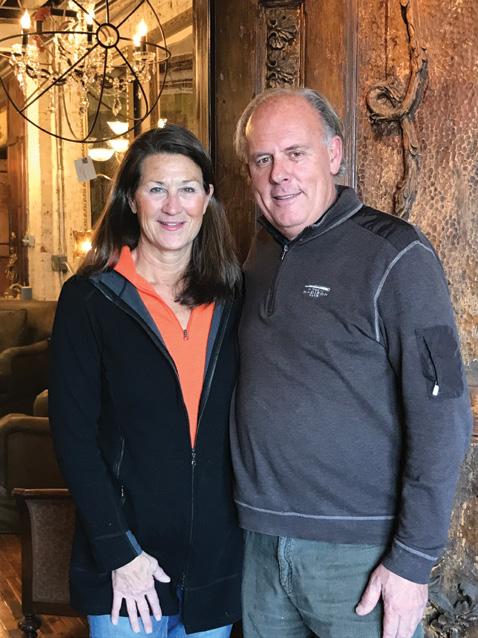

Keeping your kitchen clean is a no-brainer, but have you taken a close look at your exhaust hood or garbage dis posal lately? You can help keep the exhaust hood clean by wiping it down regularly, but grease may eventually build up until it’s best left to a professional cleaner who specializes in kitchen appliances. Garbage disposals can also be regularly cleaned us ing items from around the house (like bak ing soda and vinegar or ice and rock salt), but for particularly bad smells or clogs, it’s best to have a plumber take a look.
Even if you’re keeping things clean, some home safety items just need to be professionally checked and repaired or replaced on a regular basis. Experts recommend that you inspect your fire extinguisher (making sure it’s accessible, that the pressure gauge is working, and that it’s full) once per month. You don’t have to have any special certification to inspect it, but fire extinguishers should be serviced by a professional (like your local fire department) once per year. Most residential fire extinguishers should be replaced every 10 or 12 years, even if they’ve never been used.
Your home also needs functioning smoke and carbon monoxide detectors to alert you to potential hazards. There are several different kinds of detectors on the market, but most smoke detectors will either have a 10-year lithium-powered battery (that will need replacing every decade) or a hard-wired detector with a battery backup (that will need replacing every six months). Carbon monoxide detectors typically need their batteries replaced every year.
Last, but not least, make sure your fur nace is regularly maintained. That means replacing the filter every 30 to 90 days (de pending on if you have pets or allergies), and, for gas furnaces, cleaning the burners regularly. All furnace types should also be inspected (and serviced, if necessary) annually by an HVAC professional.
It’s easy to put off major cleaning and maintenance around your house with the promise of “I’ll do it tomorrow.”We hope that this month being Home Maintenance and Safety Month will remind you to get on the phone and call all your maintenance and cleaning professionals today!
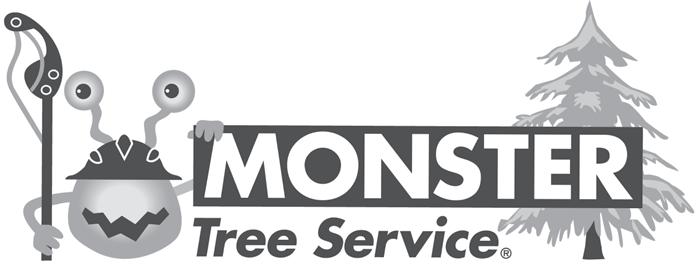
S ources for this article included: green ermethod.com, familyhandyman.com, epa. gov, homedepot.com, bhg.com, nfpa.org, and firstalert.com.
Our Omaha wine store has the best selection of hardto-find wines from famous regions around the globe. We have a special focus on California and Oregon wines and are proud to offer you the best selection anywhere.

Michelle Hyder, owner

Check out our website for upcoming

omahawine.com




701 North 114th Street omahawine.com (402) 431-8558
“On a regular basis, I receive feedback from my clients about how much they enjoy Women’s Edition. They love the articles and finding businesses that they didn’t know about until they read Women’s Edition. I personally enjoy the informative, easy-to-read articles and how well the magazine is laid out.
From a business perspective, advertising in Women’s Edition has been very beneficial in helping my business grow. I get new clients on a regular basis from Women’s Edition.”
Jewelry is an accessory that transforms an outfit by providing a finishing touch. If you are looking for jewelry but have not found any thing that meets your needs, or if you want something unique and individualized, custom jewelry is an option worth considering.

You may think that custom jewelry is too expensive, but jewelry can be designed for an extensive range of bud gets. Custom work includes designing pieces from scratch, updating pieces in an outdated or broken collection, and repurposing gemstones to create a new piece. There are several factors to consider in the custom jewelry process, such as deciding what you want, determining a budget, choosing materials, and selecting the right jeweler.
Before you get started, think about what kind of jewelry you want to have made. Do you want a ring, necklace, earrings, or bracelet? Perhaps a set? Do you prefer specific shapes like round, rectangular, or oblong? Are you drawn to antique, classic, retro, or bold jewelry? Collect photos of pieces you like to give the jeweler a sense of your style.
Several factors impact the cost of custom jewelry. The design process, labor, and materials contribute to the over all price. Setting a budget will help define parameters such as customization and complexity of the designed piece. A budget may also influence the choice of metals and stones used in the design. If you’re providing some of the materi als yourself, that can lower the cost considerably.
Gemstones are often the first thing that comes to mind when one thinks about jewelry, but the metal used plays an essential role in the foundation and look of a piece. As with clothing trends, the popularity of specific metals in jewelry fluctuates, but silver, gold, and platinum remain favorite options. These metals are also practical choices because of their malleability and resistance to corrosion and oxidation.
Silver is the most budget-friendly option, but it may scratch or tarnish over time. Gold varies in its hardness and durability based on its purity—gold that is higher in karat is softer and less durable. The most commonly used gold in jewelry is 14K or 18K. Gold alloys are created when gold is mixed with other metals that possess more strength and durability. Platinum is rarer and more expensive than gold. It is known for its durability, although it can scratch over time. The gemstone you choose may influence your metal selection to achieve your desired look.
With so many options available, how do you choose a gemstone? You may have heard the terms “precious” and “semi-precious” stones, but do you know what they mean? Historically, diamonds, emeralds, rubies, and sapphires were considered precious stones because of their rarity, and all other stones fell into the semi-precious category. Many gemologists today consider these terms misleading because
some semi-pre cious stones are worth far more than some pre cious stones.
By Angella ArndtThe quality of diamonds is often graded by what are known as the 4 Cs: color, clarity, cut, and carat weight. These same factors also apply when determining the value of other gemstones. Although the 4Cs provide valuable information about the quality of a gem, they do not measure its beauty. Select a gemstone that appeals to you, is appropriate for its intended use, and fits your budget.
What should you expect when commissioning custom jewelry? The process begins with a consultation with the jeweler. Bring pictures of pieces you like, and be prepared to discuss your budget, design ideas, type of jewelry, and style. Based on your consultation, the jeweler will create a blueprint and provide an estimated cost and timeframe to make the piece. After design approval, the jeweler may provide a 3-D computer image followed by a 3-D wax model. The approved model is cast in the desired metal and polished, followed by the setting of the desired gemstone to complete the piece.
Purchasing a piece of custom jewelry is an investment, and there are several items you should consider before selecting a jeweler. Is the jeweler professionally trained and certified? Knowledgeable? Do the jeweler and jewel ry store, if applicable, have a good reputation? Ask to see some of the jeweler’s previous work. How are certifications and appraisals handled? What are the return policy and warranty? Ask family and friends for referrals. The custom jewelry process takes approximately four to 12 weeks, depending upon the design phase, complexity, and creation process.
Commissioning custom jewelry means having a person alized and uniquely crafted piece of beauty. In addition to being works of art, custom jewelry pieces are investments that can be passed along and cherished as family heirlooms for generations to come.
Sources for this article included: bloomberg.com, gemsoci ety.org, and jewelers.org.






“You get in life what you have the courage to ask for.” —Nancy D. Solomon
What do you need or want? If you had it your way, what would your friends be like? What would your body be like? What kind of relationship would you have with your spouse? Would you have a spouse? What would be your income? What would your relationship with your children be like? Would you want children? What kind of work would you do? Would you be retired? Dream as big as you possibly can.
“The bad news is, time flies. The good news is, you’re the pilot.” —Michael Altshuler
So many questions! What are the answers? I have come up with the perfect answer for me: I want to be happy…with myself, my spouse, my friends, my children, my work, my income…my entire life!
“The most important thing is to enjoy your life—to be happy. It’s all that matters.” —Audrey Hepburn
I have discovered that making the decision to be happy every day is the answer to the question that I’ve been looking for all these years. This puts me in control of my own life. For many years, I looked to other people and other situations to make me happy. Guess what? It rarely worked. Most of the time, I wasn’t very happy!
By Janet Van deWalle“The only thing that will make you happy is being happy with who you are.” —Goldie Hawn
Once I understood and believed that the only person who can make me happy is me, it changed my life. That is the secret to me being happy with my entire life. Looking to anyone in my life to make me happy is backwards. We have to be happy with ourselves before we get joy from the “realities” of our lives. When we are truly happy with ourselves, then we will match up with the best of all of those people and situations in our lives.
How do I do it? Each morning, immediately upon awakening, my first thoughts are how grateful I am…for my husband, my family, my health, my business, and my friends.
“Gratitude turns what we have into enough, and more. It turns denial into acceptance, chaos into order, confusion into clarity... it makes sense of our past, brings peace for today, and creates a vision for tomorrow.” —Melody Beattie
It feels so very good to start every day with gratitude for all that I have in my life. It makes me happy…and it really is that simple! I hope this helps all of you!
“The way we choose to see the world creates the world we see.” —Barry Neil Kaufman
Get a FREE review or quote for coverage on: Medicare Supplement, Medicare Advantage Plans, Prescription Drug Plans, Dental, Vision, under age 65 health plans, group plans. Contact Kristin for an in-person Community Meeting or your personal review.



schedule
Turning your drafty fireplace into a high efficiency heater will add value and comfort to your home. Whether you are thinking of redesigning or refacing the look of your current fireplace or adding a fireplace to any room of your home, Claxton Fireplace Center can assist you with all your needs. We offer In-House design and complete installation services. Our showroom features 24 custom built “Burning” fireplace displays including traditional, rustic and contemporary designs.





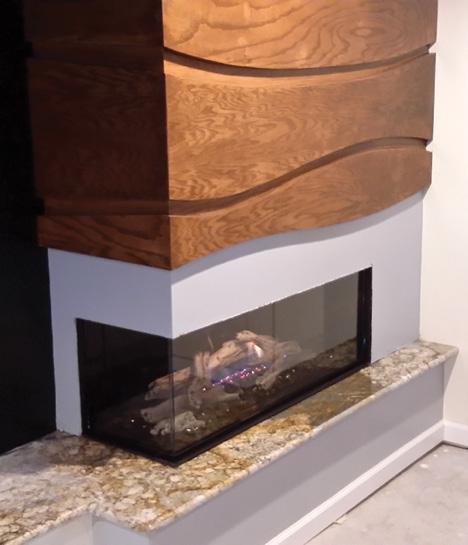




In nature, evolution can require a process of thousands of years. At Curt Hofer & Associates, helping you to create your environment is second nature to us.
Bring your designs, your inspiration, your preferences, pictures and even pins. Together we’ll move through a process that lets you ease into a flawless execution of your ideal surroundings.
Contact us today to see why Curt Hofer & Associates has earned top awards for our iconic design and inspired living spaces for more than 27 years.
402.758.0440 | www.curthofer.com
